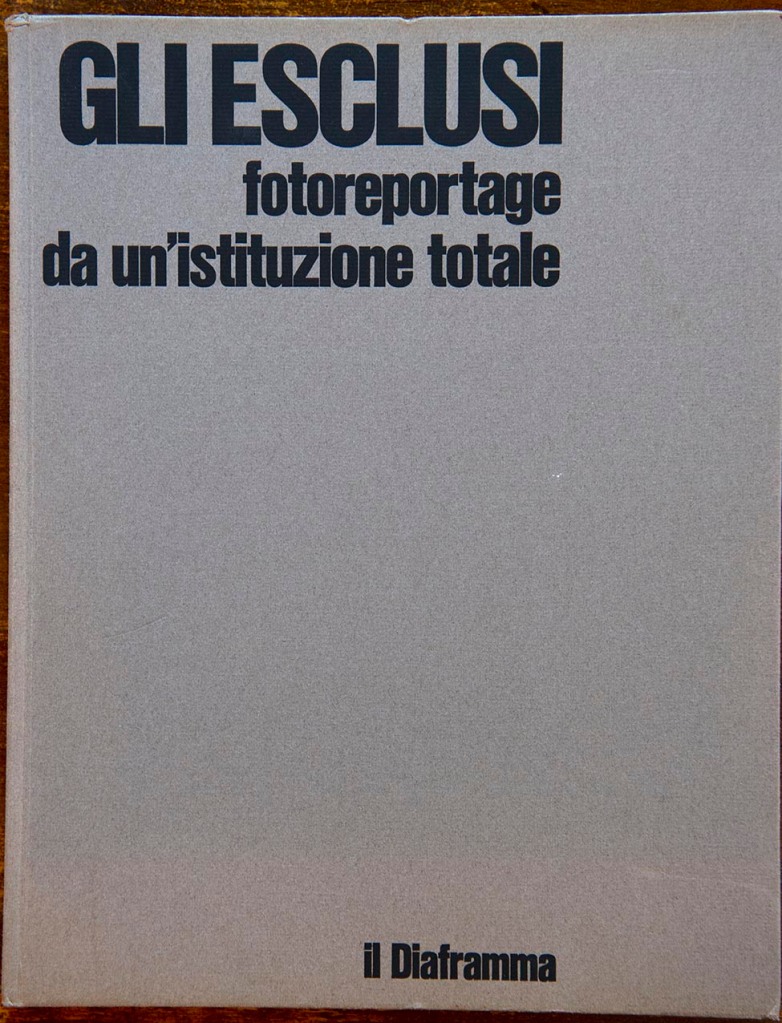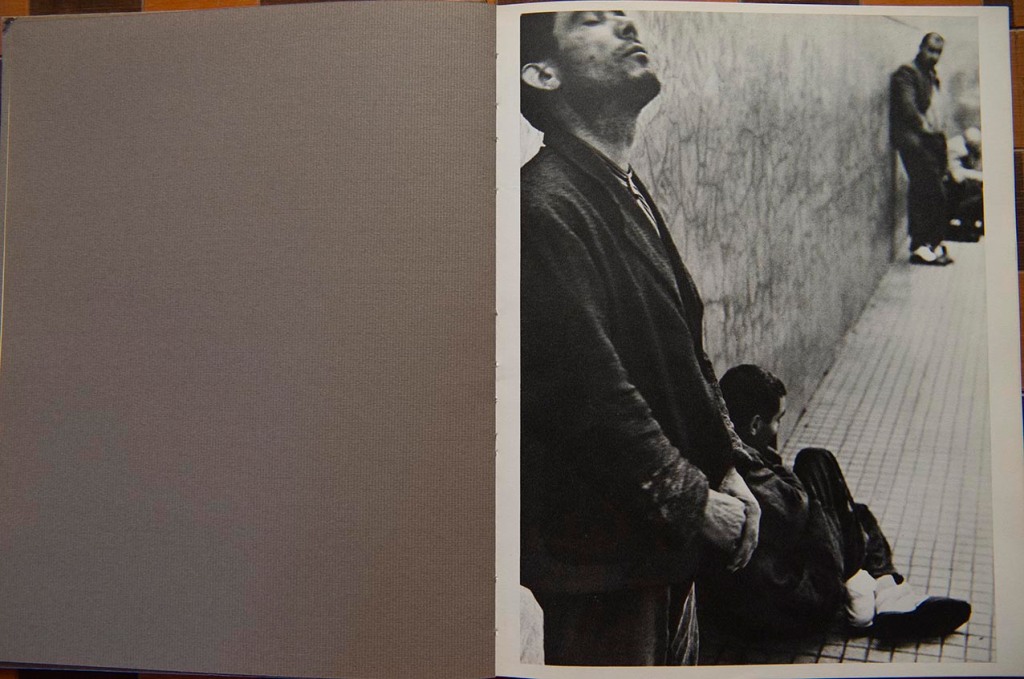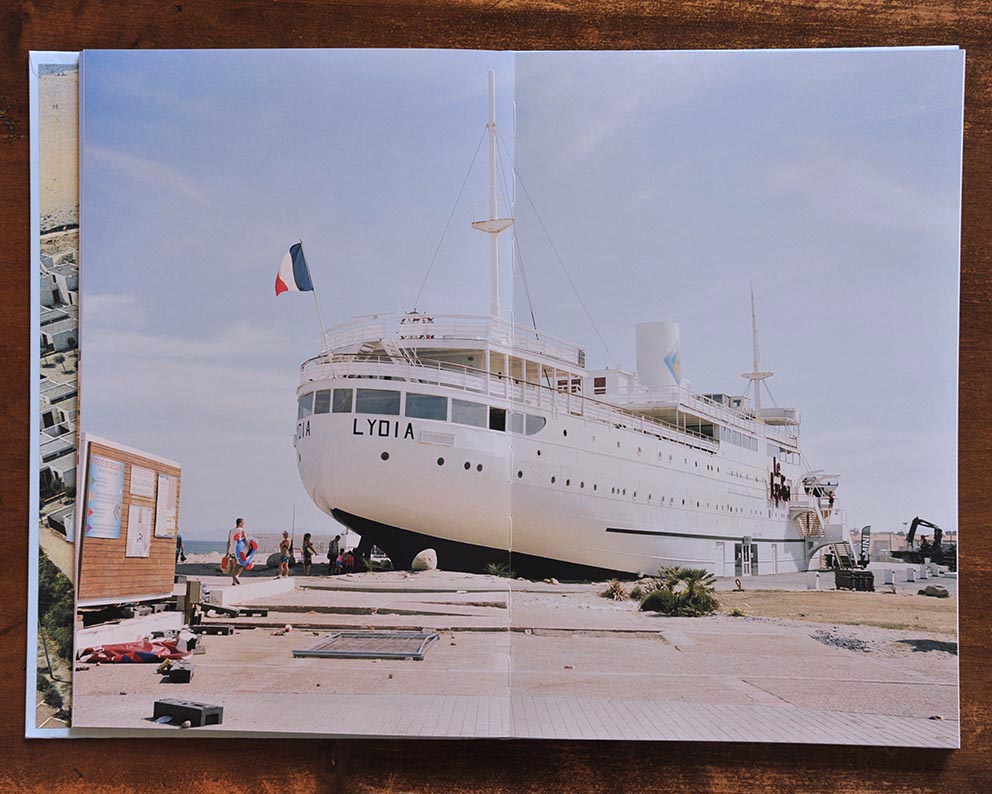Petite digression autour de la présence humaine sur les photographies de paysage
Posted: August 5, 2023 Filed under: Uncategorized Leave a commentIl y a une question récurrente qui revient dans presque chaque groupe de travail auquel je participe dans le cadre des Observatoires Photographiques du Paysage. Qu’en est-il de la présence humaine ? Il est très souvent reproché aux photographes de « paysages » de ne pas faire figurer d’êtres humains, ou d’usagers, sur leurs photos. Si une des raisons initiales, le grand format, la photographie lente, la pose, n’a plus tout à fait lieu d’être, la dimension anecdotique reste quelque chose qu’on cherche à évacuer, et bien souvent, la présence humaine est anecdotique. La présence d’un individu va immédiatement attirer l’œil et par empathie ou assimilation, on va s’attacher davantage à l’examiner que les autres éléments de la photo.
Néanmoins, dans le cadre de la commande de la Mission Val de Loire pour un OPPP (OPP participatif), j’essaye de m’attacher à considérer les usages, d’abord pour éviter l’ennui de refaire une photo à l’identique, mais aussi parce que ces paysages ont la particularité d’être en permanence traversés par des usagers, notamment dans un cadre touristique (la Loire à vélo). Je me surprend à parfois attendre que surgisse quelqu’un, à pied, en vélo, en voiture pour « habiter » l’image.
Trois exemples de ces photos, habitées ou pas.
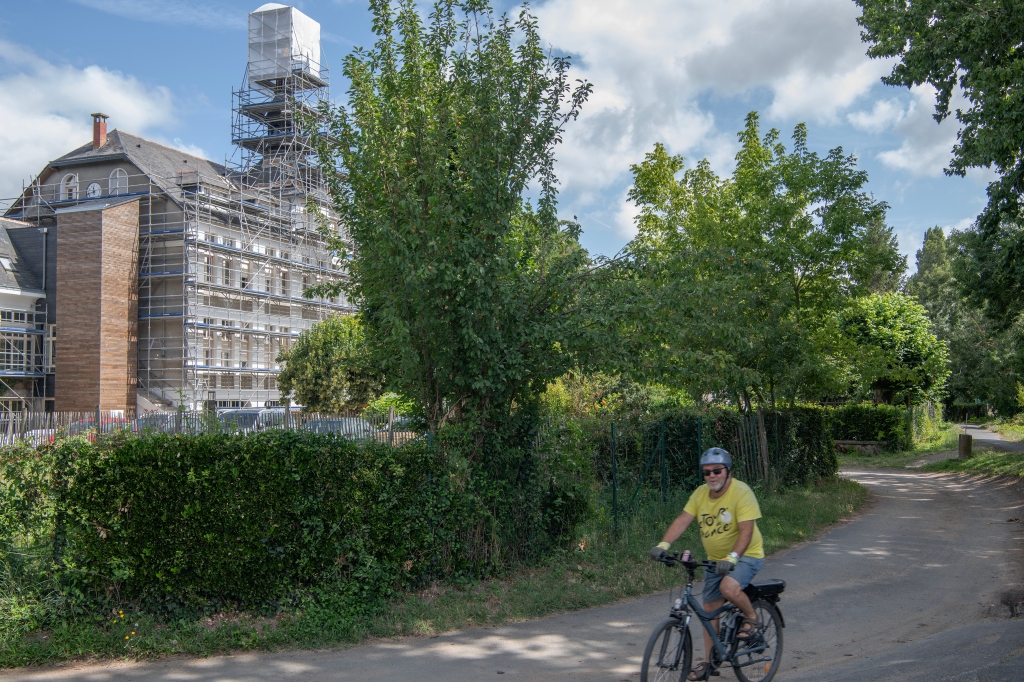
La première, cette année, sur l’ile de Behuard. C’est un endroit que je n’aime pas tellement. Petit village coquet situé sur une ile de la Loire auquel on n’accède qu’à pied, après avoir laissé sa voiture sur un parking à l’entrée. Je m’installe pour ma prise de vue et un cycliste apparaît au loin. Me voyant installé il s’arrête, je lui dit qu’il peut passer qu’il n’y a pas de souci. A quoi il me répond : oh je sais ce que c’est quand des personnes viennent pourrir ma photo en passant devant, je ne veux pas déranger. Mais en l’occurrence, je préfère la photo avec lui que sans lui… alors je l’encourage à passer et fais la photo !
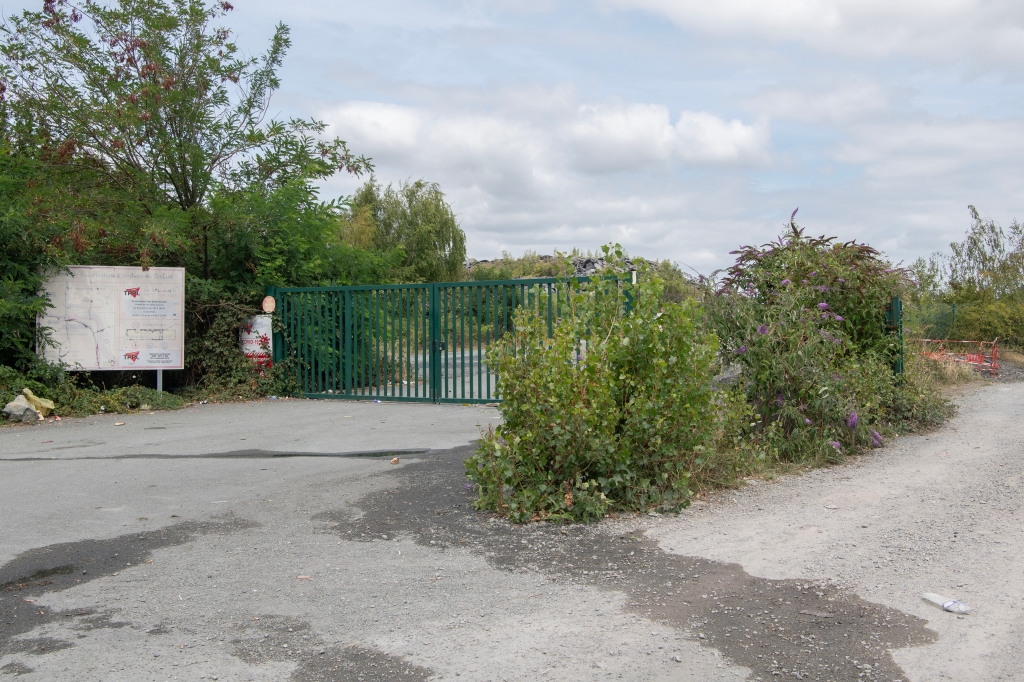
Un autre cas dans la même journée, près du parc des Ardoisières à Trélazé. Lors de la campagne d’origine, il m’était impossible de ne pas passer faire une photo dans le coin, sans pour autant savoir vraiment ce que j’allais trouver. J’avais choisi cet endroit un peu à l’écart, en bordure du site du Parc et cela fait partie des endroits que j’aime retrouver. Grand changement cette année car lorsque j’arrive, il y a des colonnes de tri à gauche de la photo, et sur le terrain situé plus à droite, une immense communauté de gens du voyage. Et devant la barrière que je dois photographier, une voiture entourée d’une dizaine de personnes, en train de vider/remplir le véhicule. Des hommes, des femmes, des jeunes et des plus vieux. Je commence à leur expliquer ce que je viens faire, très peu parlent français (malgré des immatriculation dans le Morbihan et le Finistère). Ils ne veulent pas être sur une photo, on discute un peu et je leur propose de reculer leur voiture le temps de la photo. Comme ça je fais mon boulot et ensuite, ils reprennent leur routine. Une femme plus âgée donne son accord et organise le mouvement. D’autres personnes arrivent pour voir ce qui se passe, je sors mon ordinateur pour leur montrer la photo que je vais refaire. Ils me disent qu’ils me croient, mais j’essaye quand même d’échanger avec eux, de les intéresser à ce que je fais. Voilà la place est libre et je fais ma photo. J’aurais bien sûr préférer le joyeux bordel qu’il y avait à mon arrivée, mais le moment fut quand même sympathique. Comme quoi une photo sur laquelle ne figurent pas de personnages n’en est pas pour autant complétement dépourvue. Mais on touche là à la limite de la photographie qui montre un ici et maintenant, un instant décisif qu’on sent bien imparfait au regard de l’épaisseur d’une histoire, et vous remarquerez que ce paragraphe au sujet d’une photographie vide est le plus long.
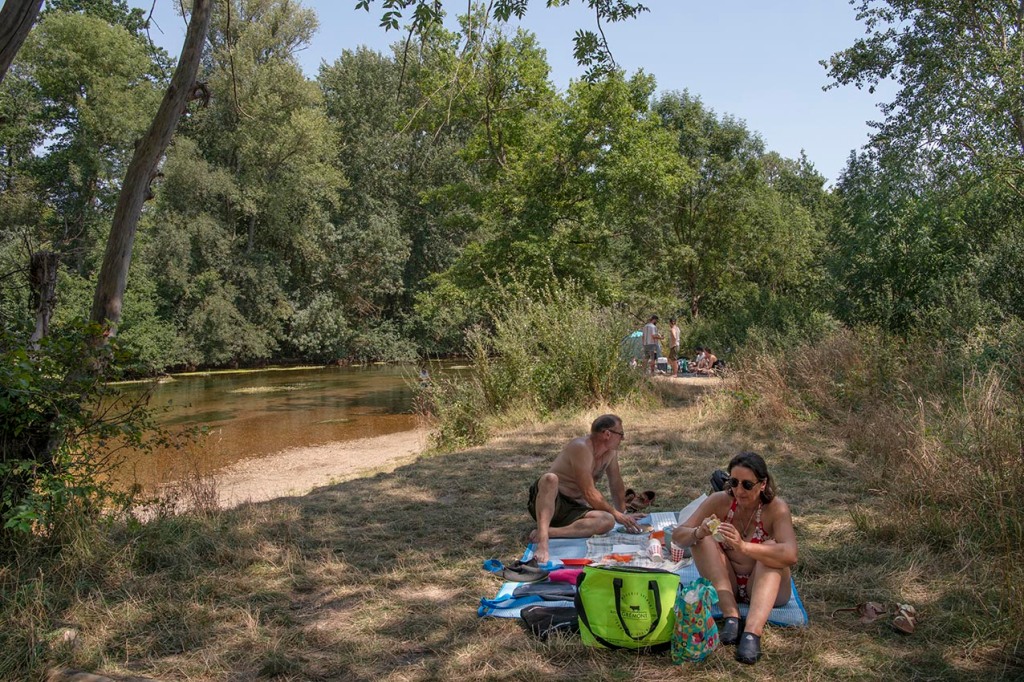
La troisième histoire, je vous l’avais raconté l’an dernier, lors d’une reconduction dans le Loiret. Il y a une petite plage improvisée à la confluence de la Loire et du Loiret et chaque année, aux beaux jours des personnes s’y baignent – plus pour longtemps m’a-t-on dit car c’est interdit. Je pose l’appareil et il y a ce couple au premier plan. Je leur explique la démarche et précise qu’ils sont dans le champs de l’image, mais que ça ne me gêne pas car cela fait partie de l’usage du lieu (j’espère au fond de moi qu’ils ne vont pas bouger). Ils vaquent à leurs occupations, la femme va se baigner revient manger, l’homme est sur son ordinateur en télétravail. Je suis finalement content de trouver quelques personnes consentantes pour figurer sur une photo.
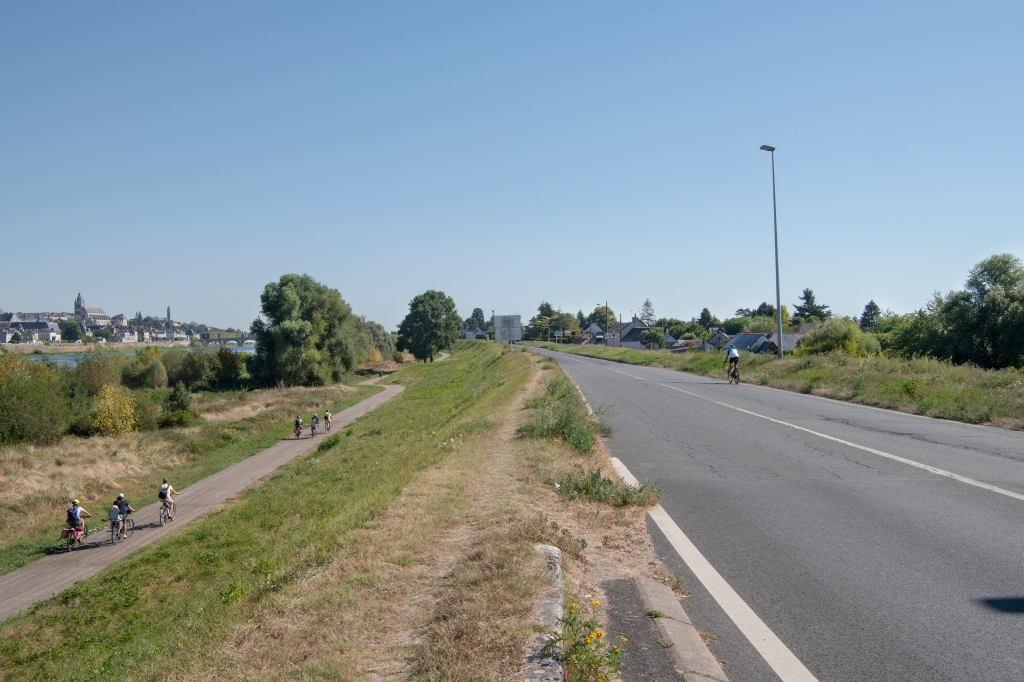
Enfin, sur la présence humaine sur les photographies de paysage, il y a ce dernier cas avec lequel je me suis amusé. Il s’agit de la reconduction d’un point de vue à Blois dans le cadre de l’opération Regards de Loire. On y voit un tronçon de la Loire à Vélo. Je pose mon appareil et attend qu’il y ait des cyclistes sur cette piste. Une famille surgit, je fais une photo, puis deux, puis d’autres au fur et à mesure qu’elle s’éloigne, ne sachant pas encore celle que je choisirai en terme de composition. Je me retrouve le lendemain sur l’ordinateur pour la post-production des images. Comme je travaille sur pied, elles sont toutes identiques en terme de cadre, alors je m’amuse et je me dis qu’il y a bien peu de monde sur cette Loire à vélo. Je sélectionne la famille à vélo éloignée dans la deuxième vue et la colle dans la première. Si on regarde rapidement, on voit deux groupes de cyclistes sur cette image, mais il s’agit deux fois du même ! J’ai également livré cette seconde version avec la première, non manipulée, mais sans préciser plus que cela ce qui s’y passe, je lui ai juste donné un numéro bis.
La présence de personnes sur les photographies, au delà de la question des photographies de paysage est devenu de plus en plus compliquée et il est bien souvent plus facile d’éviter des personnages qui vous agressent au nom du droit à l’image dès qu’on pointe un appareil vers eux. Mais parfois, c’est aussi l’opportunité de rencontres et d’échanges, et cela reste quelque chose d’important pour moi.
Toutes les photographies présentées ici sont de Christophe Le Toquin.
A history that could have been
Posted: November 1, 2022 Filed under: Uncategorized Leave a comment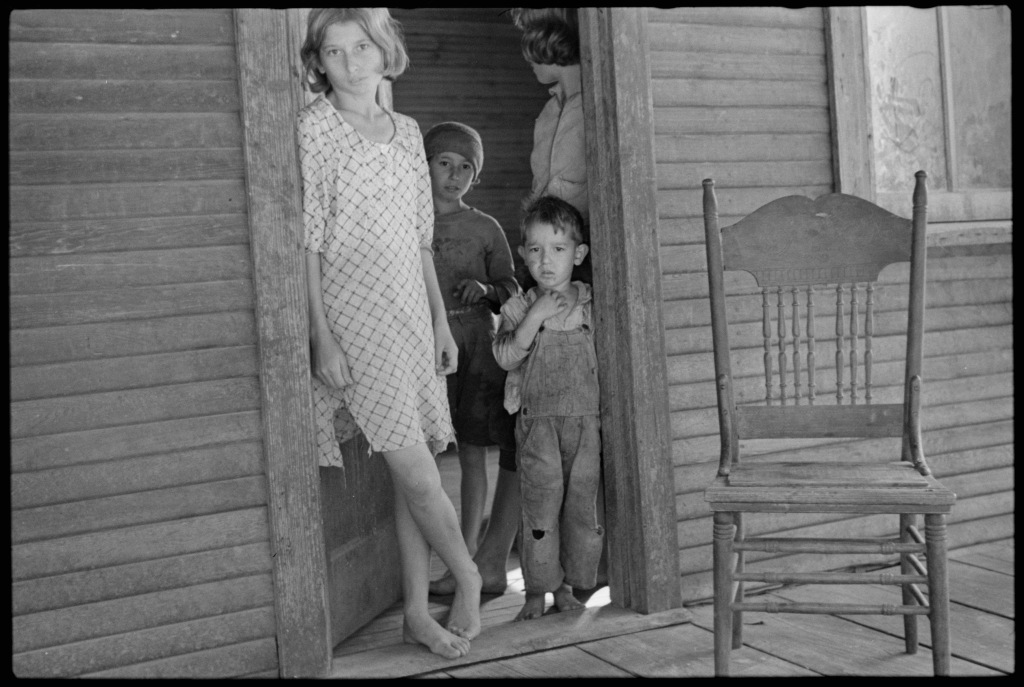
While wandering through the Library of Congress internet site, I came across this wonderful picture by Ben Shahn, from 1935, while working for the Resettlement Administration. The title is Children of Fortuna family, Hammond, Louisiana. The girl was probably around 14, so she was born in 1921 and she celebrate her 100th birthday last year. She could have been my GrandMa if only she would have come to Europe.
But in fact she did ! Her name is Helen, and she married James in 1942, a young man she met in Hammond and who choose a military career, she was just 20. On the 6th of June 1944, James was part of the American troops who landed in Omaha, and unfortunately, one of the first to fall under the fire of the German defense. Helen was informed by William, a friend of James, who decided to settle in Paris at the end of the war. Helen had to wait for a couple of years to be able to afford a ticket to visit the American cemetery where her husband was buried, and then continue her travel till Paris to visit William. This is during that stay in Paris that one evening she joined William in a bar in Montreuil where he used to go, and met Jean, a young French man, friend of William, just arriving from Burgondy. They began to see each other more and more frequently and got married in 1947. From this union, they had a boy who died when he was two months and a year later, a girl, Michele, who is my mother !
This is a history that could have been !
Vincen Beeckman, activist photographer
Posted: January 9, 2022 Filed under: Photobooks, Photography | Tags: Belgian photography, photobooks, Vincen Beeckman Leave a commentYou may already know that I am a fan of Belgian photography, but today, I would like to focus on one of them whose work I particularly love, I mean Vincen Beeckman.
The first time I have heard about him was years ago, when he was in charge of Recycl’Art, an art center which was located in the former train station of Bruxelles Chapelle. The center is now closed, but it was a wonderful place with exhibitions, workshops, happening and a very good restaurant.
In 2017, he started a touring exhibition of Belgian photographers in many small boxes which aim was to be representative of the Belgian photography scene, and called it first “Musée de la Photographie”. After a troubled period with a conflict with the already existing museum in Charleroi, the name turned to the “Fusée de la Motographie”.
During the time he worked at Recycl’Art, he took a lot of care and attention the people from minorities, like migrants, homeless, refugees.. and this is this strong empathy for the humankind that we find in all his published books.
Here below, you can find different books he made, from my own shelves.
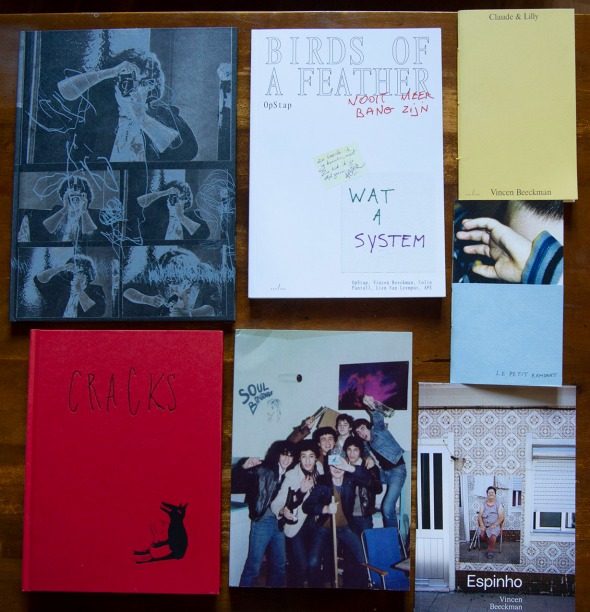
Claude & Lilly, a true love story between the two characters shot by Vincen from 2015 to 2018. Published in March 2019 by APE in an edition of 500 copies.




Filip – Anneessens. One day, Vincen was given archives photographs from the time when the Father Philippe took in charge teenagers in the Bruxelles area of Anneessens. These photographs show the daily life of those teenagers, through their activities and also travels, like to Ostende, Paris or Spain. Published in December 2019 by Recycl’Art in an edition of 250 copies.





Le Petit Rempart is a small booklet of photographs from February 2019 to February 2020 made in the emergency shelter of “Le Petit Rempart”. With tenderness, we meet all those people who spent some time in the structure. Published by Camille Carbonaro in an edition of 100 copies.


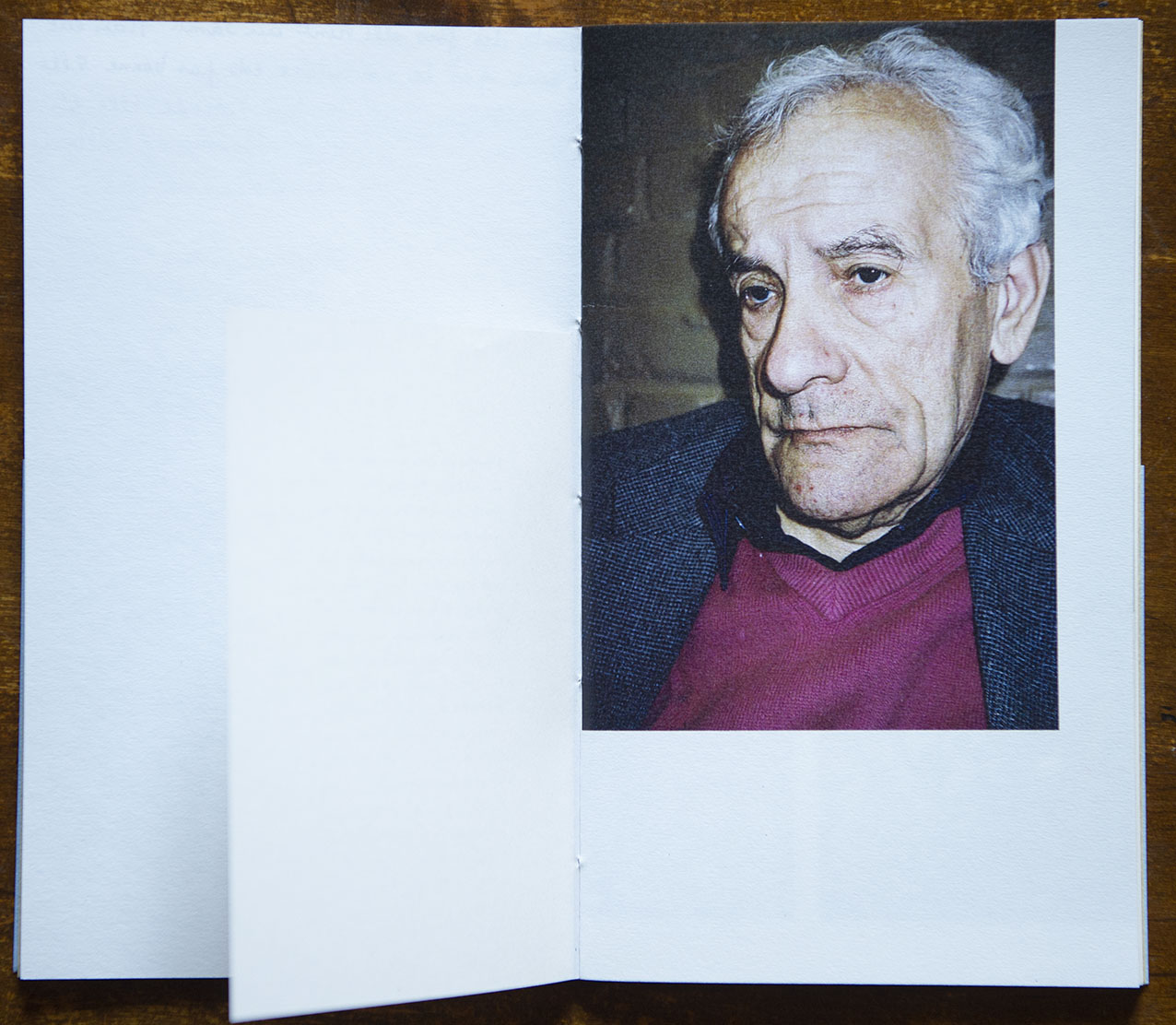

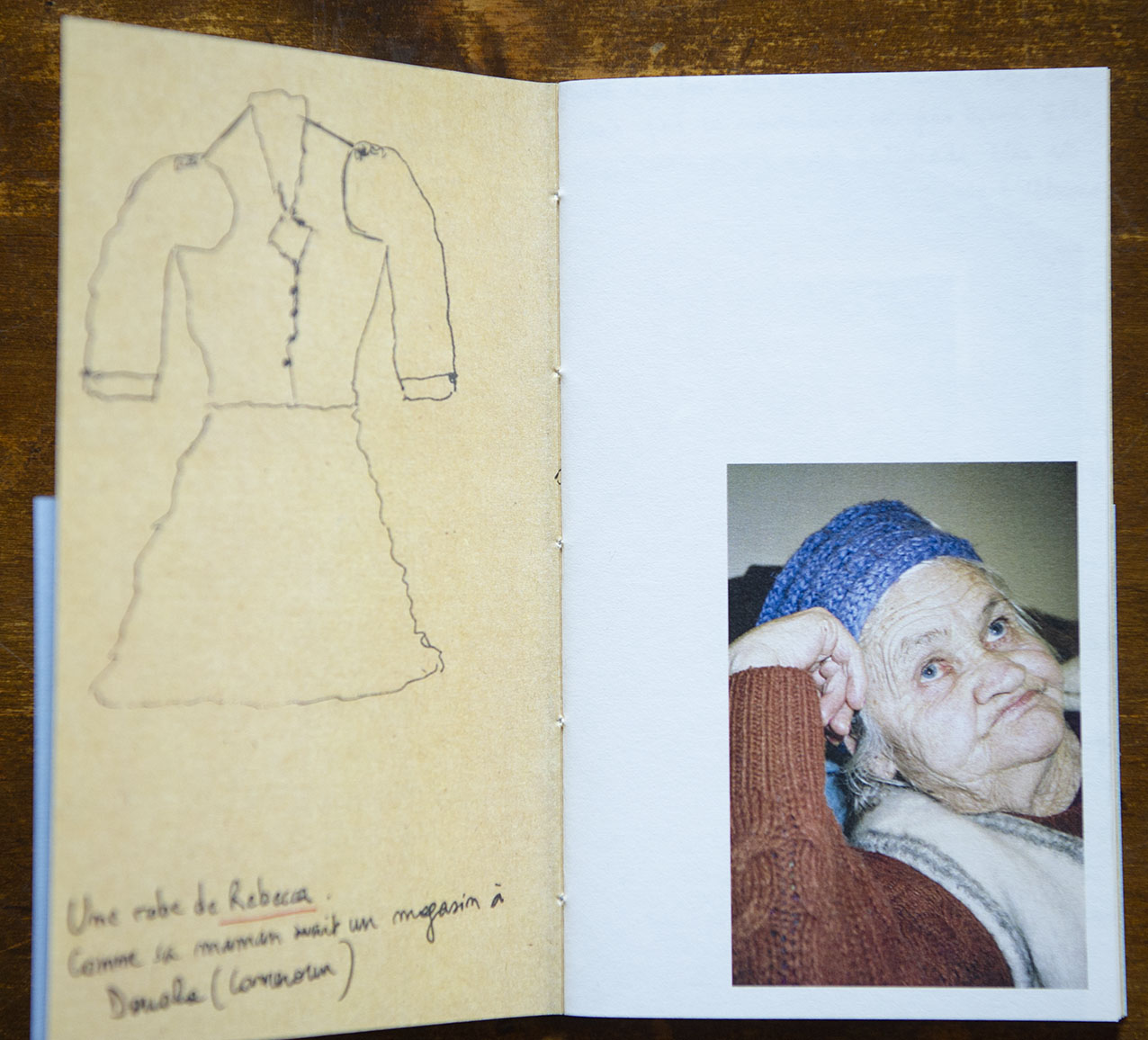
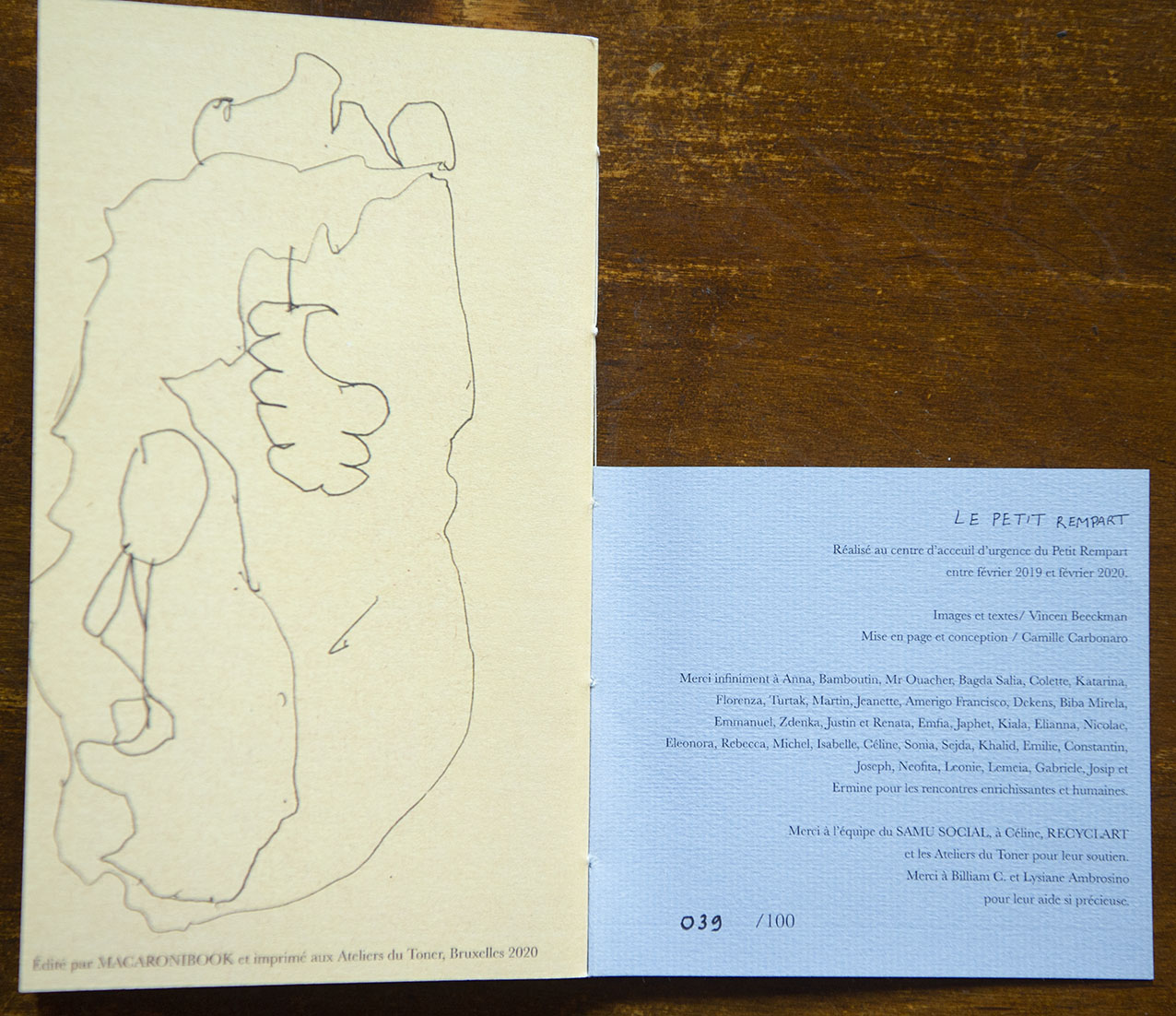
Cracks is one of my absolute favorite. For this project, Vincen gave disposable cameras to homeless people in Bruxelles, more or less around the central Station, to witness their daily life. He then did the editing of the photographs and the book was published in 2019 by VOID in an edition of 250 copies with a specific particularity if you want a copy. The book was not available in bookstores, but only by a direct contact with the homeless people. You need to call them to organize an appointment to meet them and pay the book in cash. It creates a strange, but really true relationship.
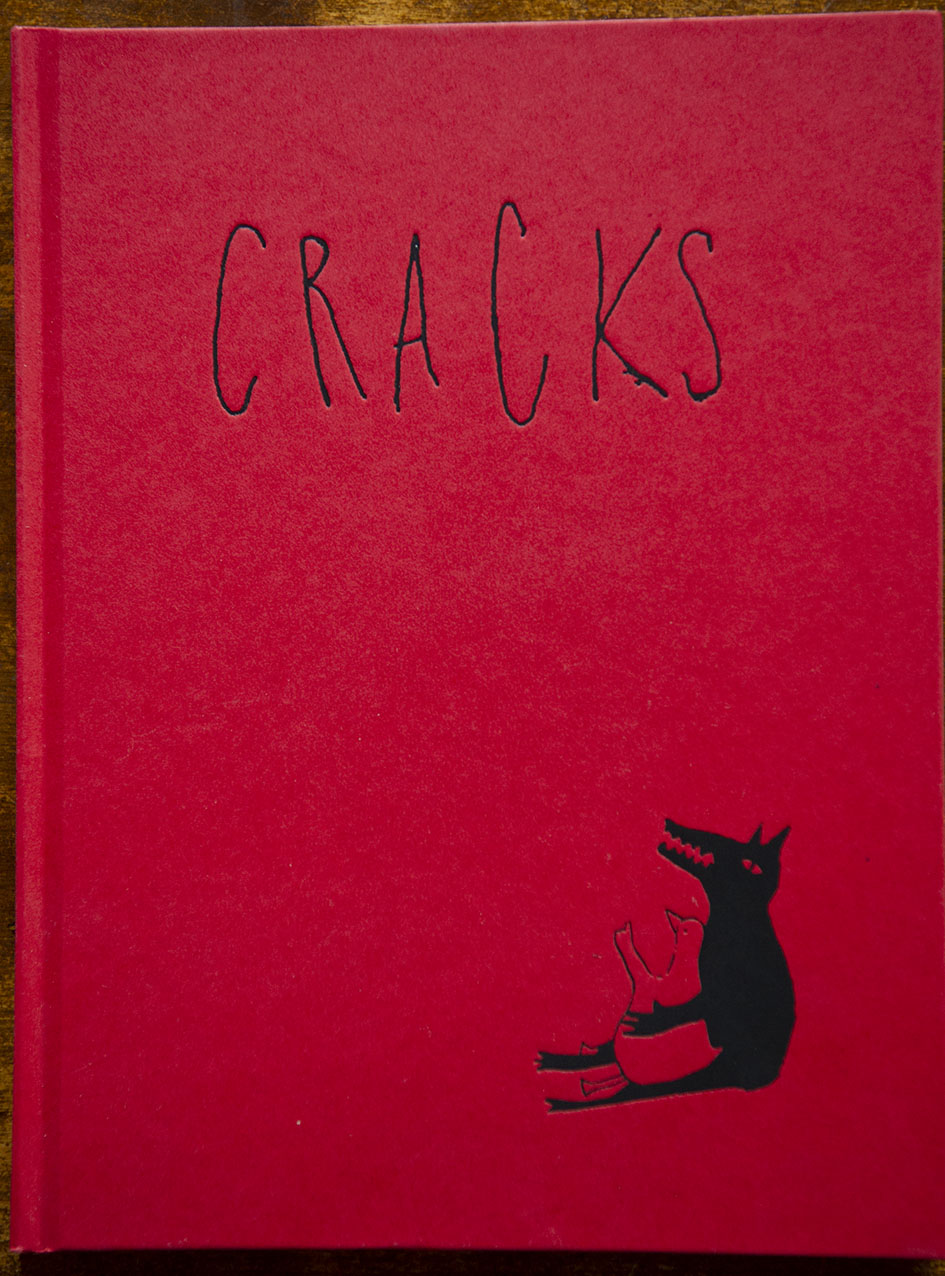
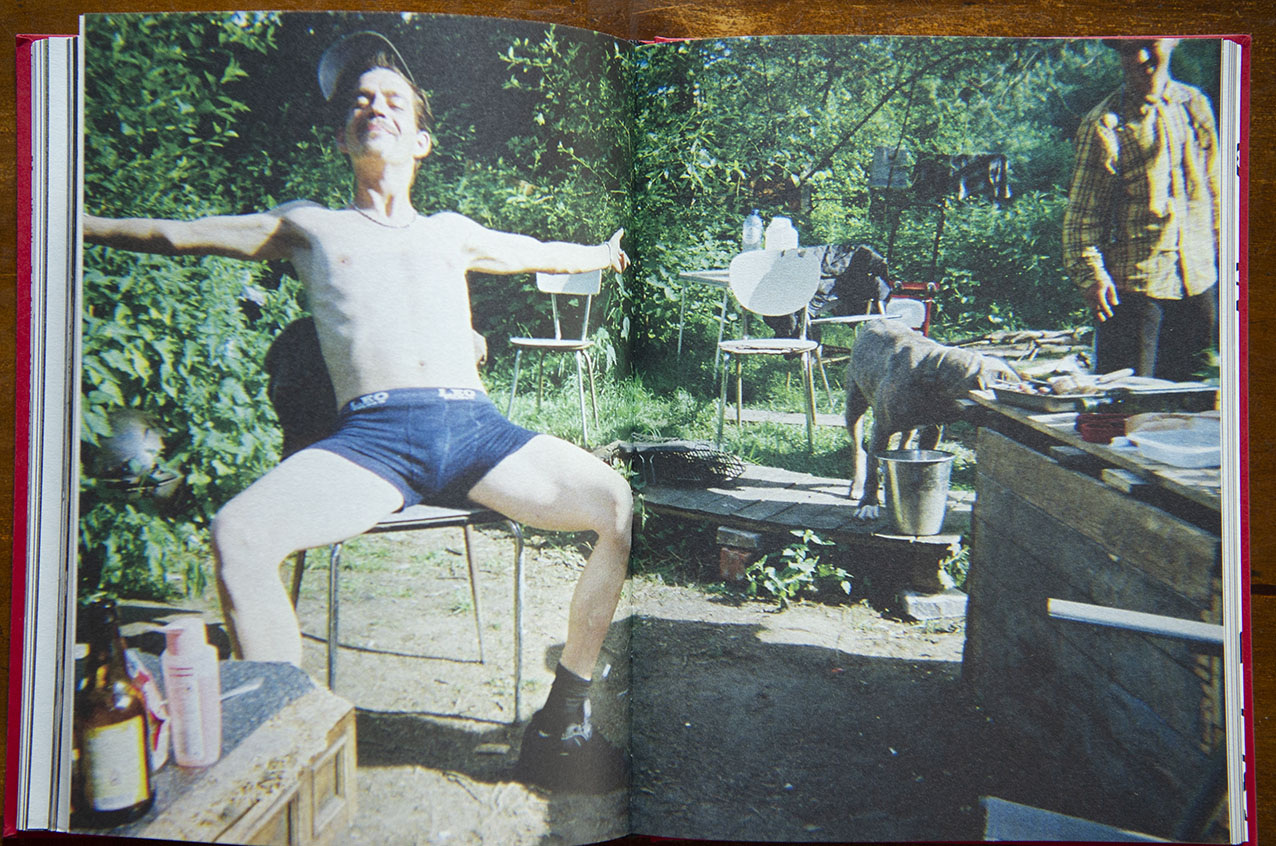



Espinho, published in 2021 by Intimate structures, is a piece of work made in the fishing community of Espinho, a borough in the South of Porto. For this work, photography was, for Vincen, a way to communicate with people, as he does not speak Portugese and the local people don’t speak French nor English. From 2016, he returned time after time to finally staged an exhibition, glued on the wall of the borough. From his own word, this book is like a family album.





Les Eternels was published in 500 copies by Ciao Press, in 2021. The photographs were made in different nursing house of elderly people, in collaboration with “A travers les arts”, an association to promote the access to culture for elderly people. The book interweaves photos of the present daily life with archives photos or press clippings creating a very joyful mix.






Birds of a feather, OpStap, the last one in my collection, is a collaborative project between Vincen for the photos, Colin Pantall for the text and Lien Van Leemput for the design, published in 2021 by APE in an edition of 1000 copies. The book focus on the organization and functioning of OpStap, a structure which aim is to help people with drug addictions.
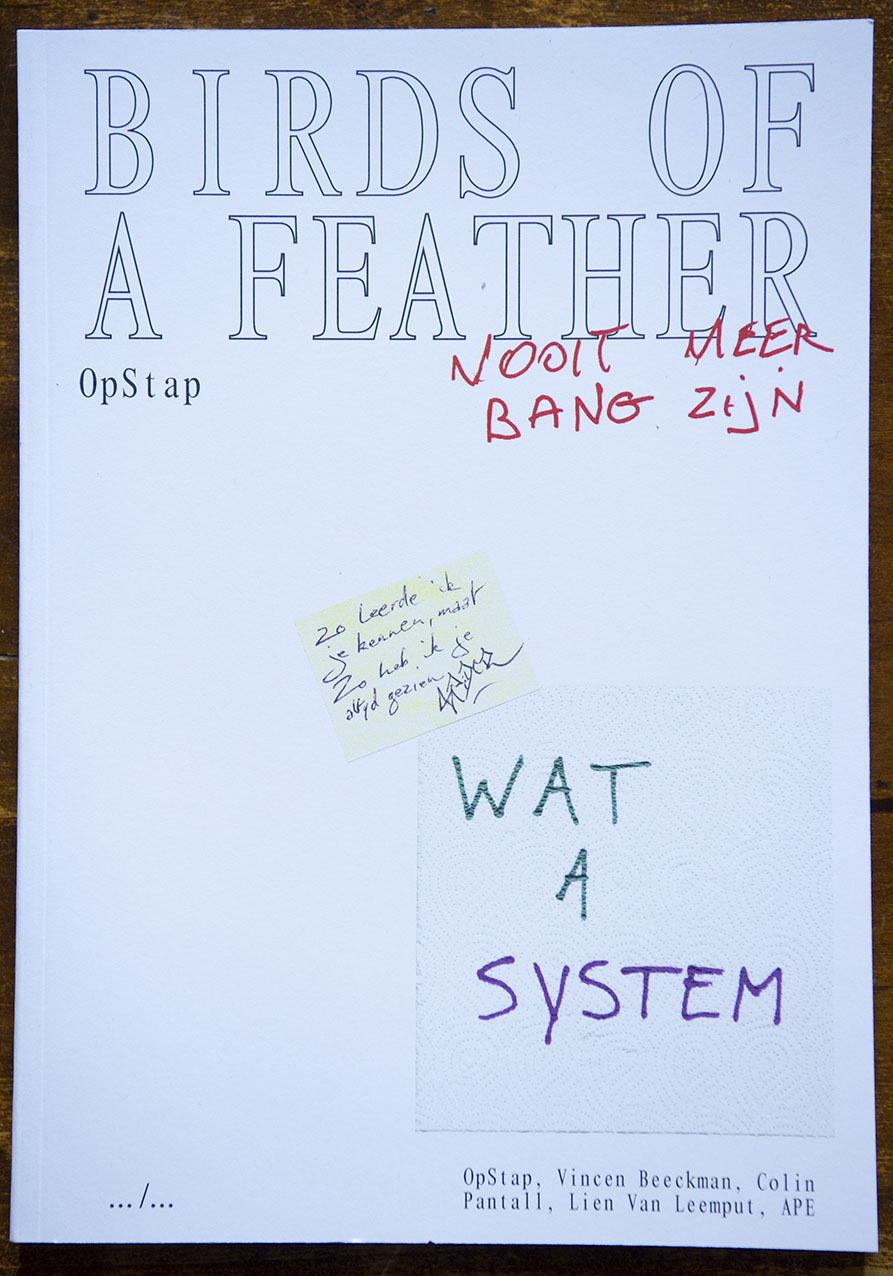




To conclude, I could nothing but recommend you to have a look at those books if you can put your hands on them. Words are powerless to describe the feelings you have when you let Vincen takes you by hand to guide you to meet all those fantastic people. And I must admit that in the ambient gloom, these books give me faith in the future of human beings.
Photography, psychiatry and mental illness
Posted: December 5, 2021 Filed under: Uncategorized Leave a commentIt has been more or less two years and a half since my last post on this site. I have to confess that I got bored in reviewing photobooks. I felt obliged to keep a rythm and thus, the pleasure had gone !
So now, I am back to business, but not anymore with book reviews. I will share thoughts, ideas, photographs and sometime, it will just be a single photo.
I recently acquired a long sought after book about Italian psychiatry experiences, and I remember that the subject of psychiatry and mental illness is something I feel a great interest for. So I decided to dig in my shelves to enlight some books on this topic. There are so many great photographers who have done photographs in those institutions. I don’t mean to be exhaustive.
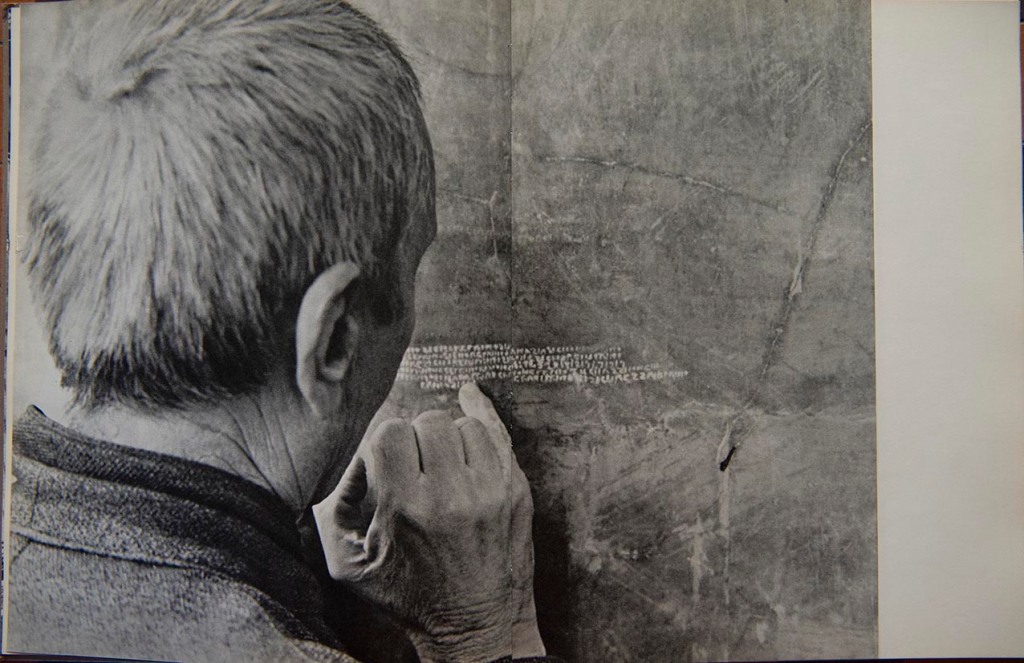
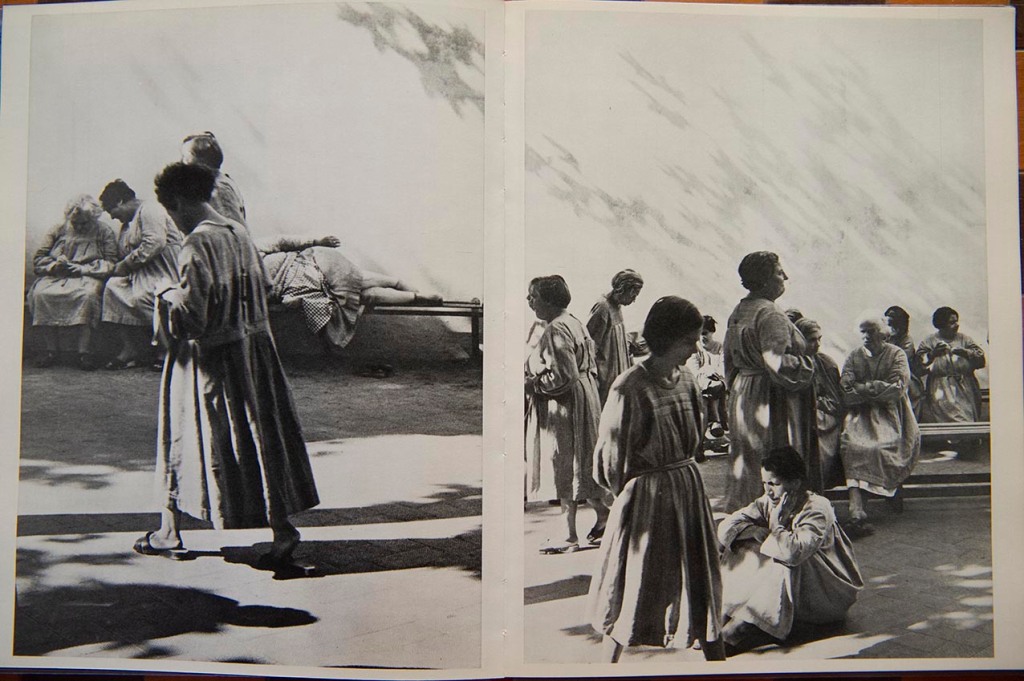
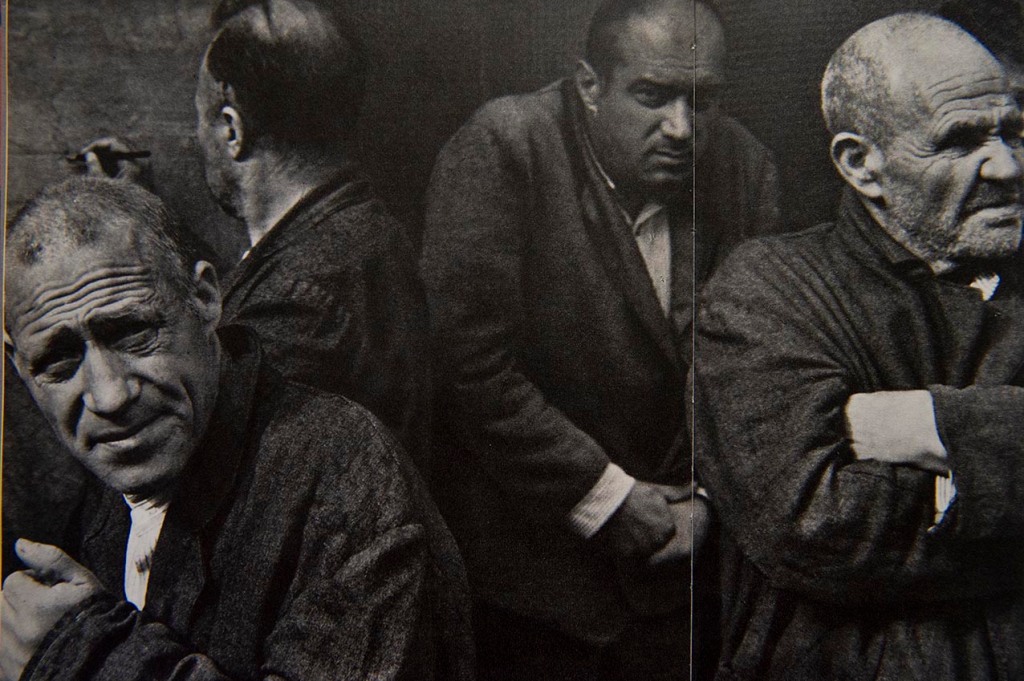
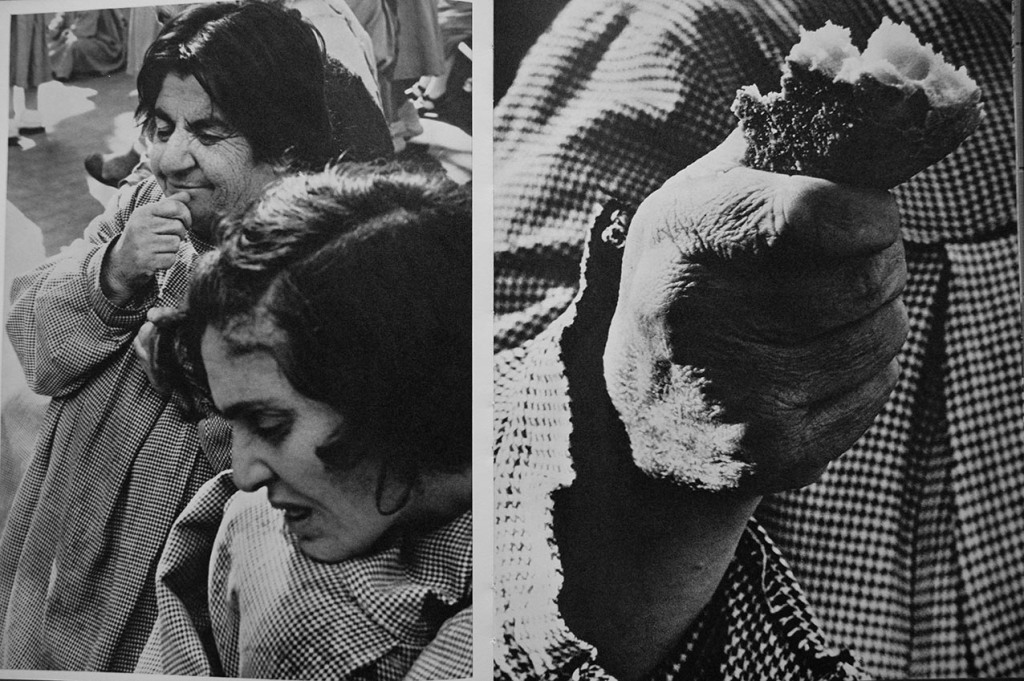
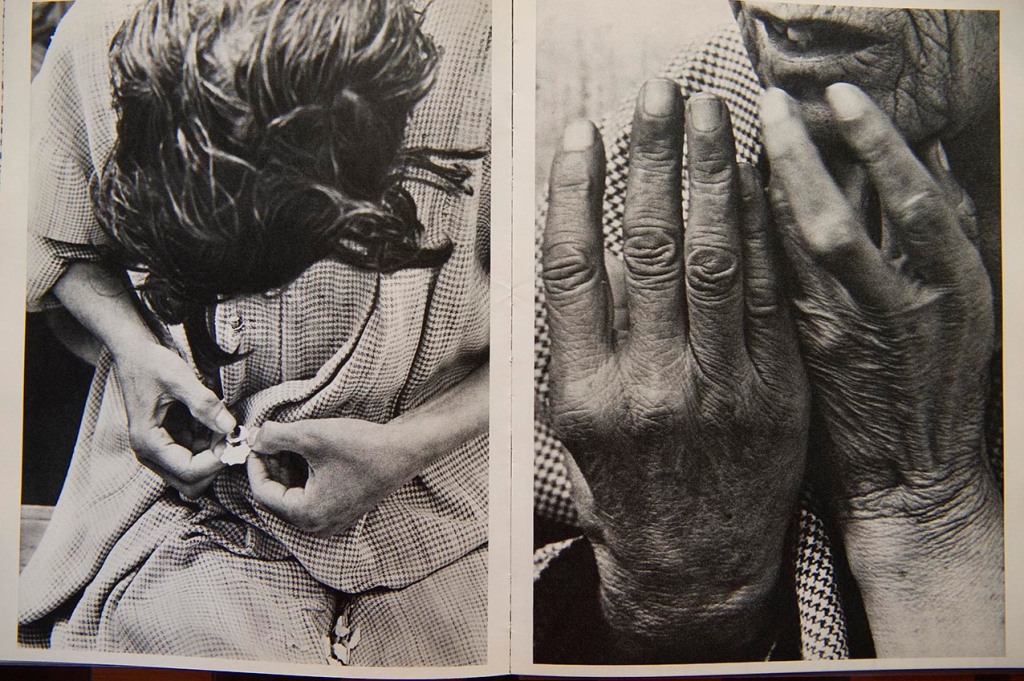
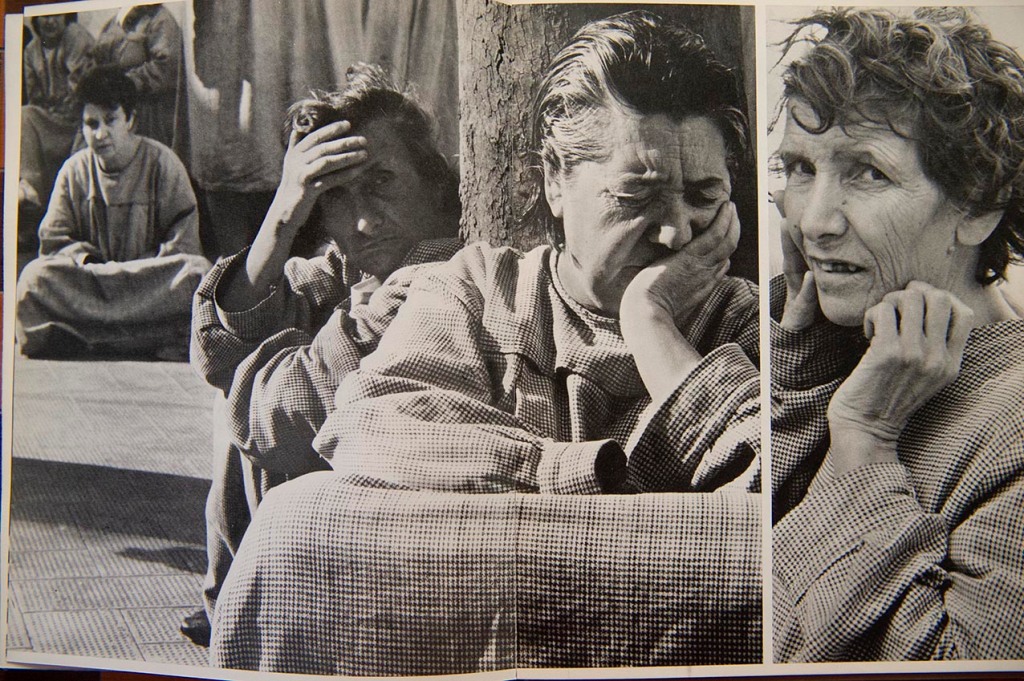
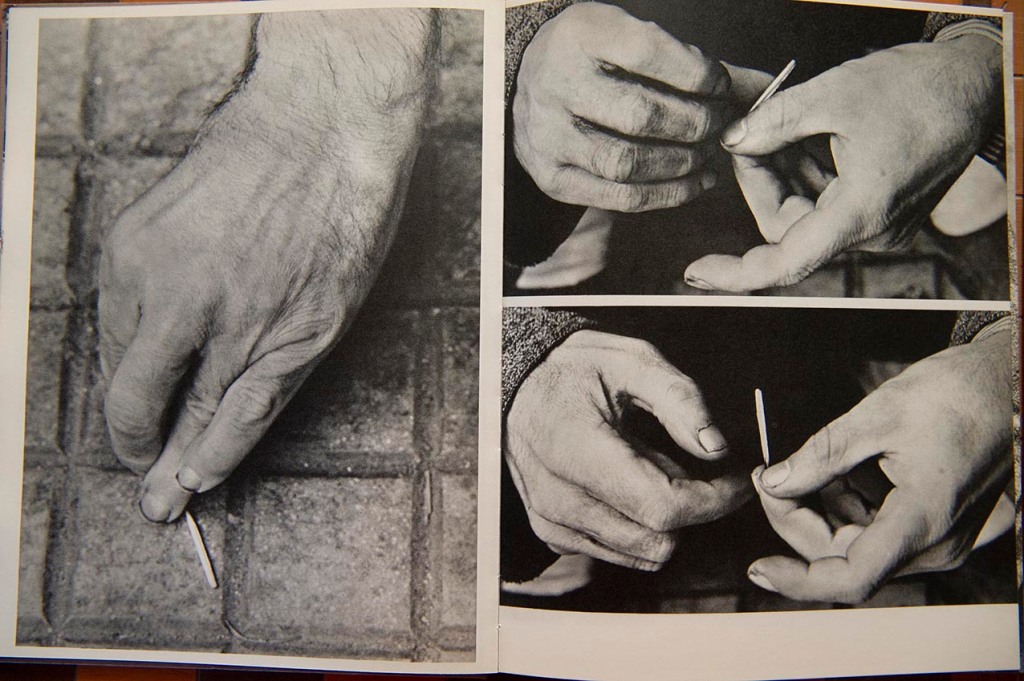
The first one, as said above, recently acquired, is “Gli esclusi” by Leonardo d’Alessandro, published in 1969 by Il Diaframma. this was in a time of the anti psychiatry reform initiated by Franco Basaglia.
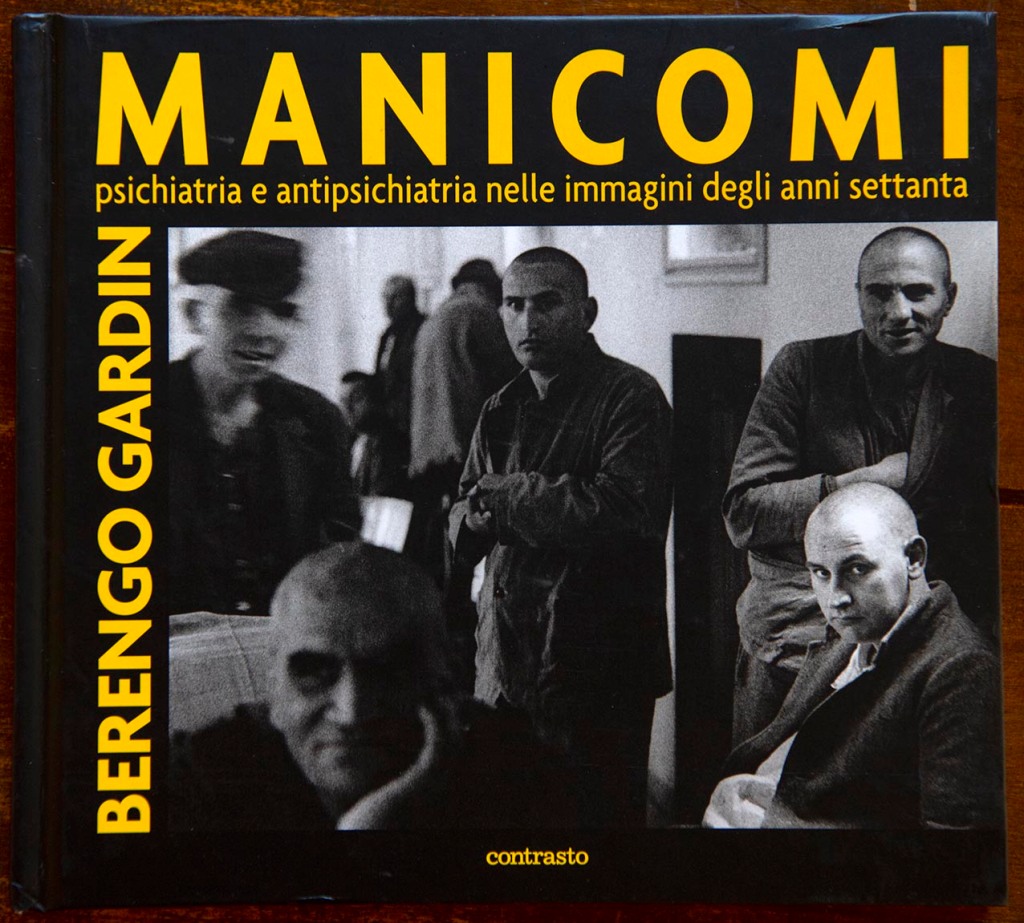
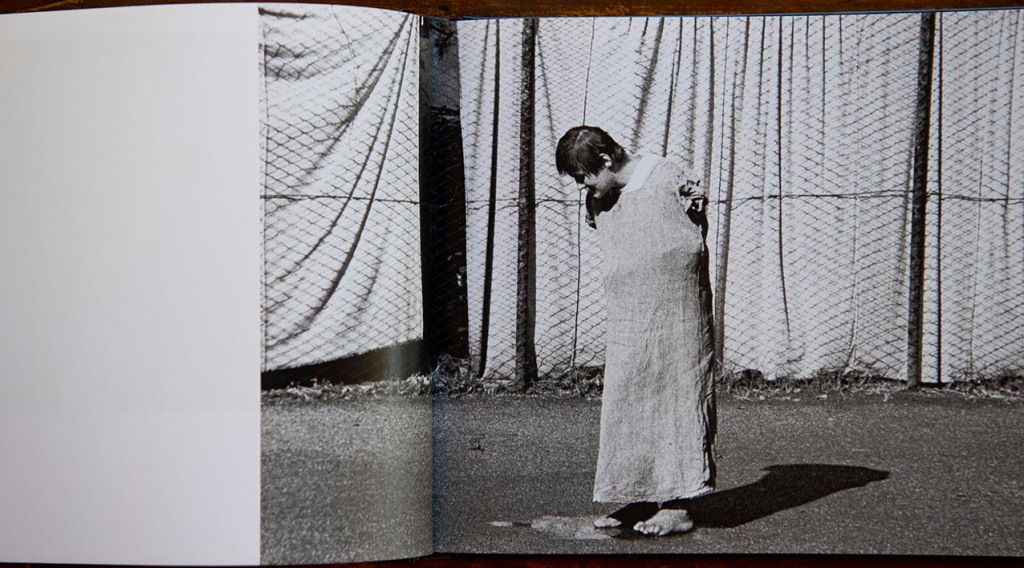
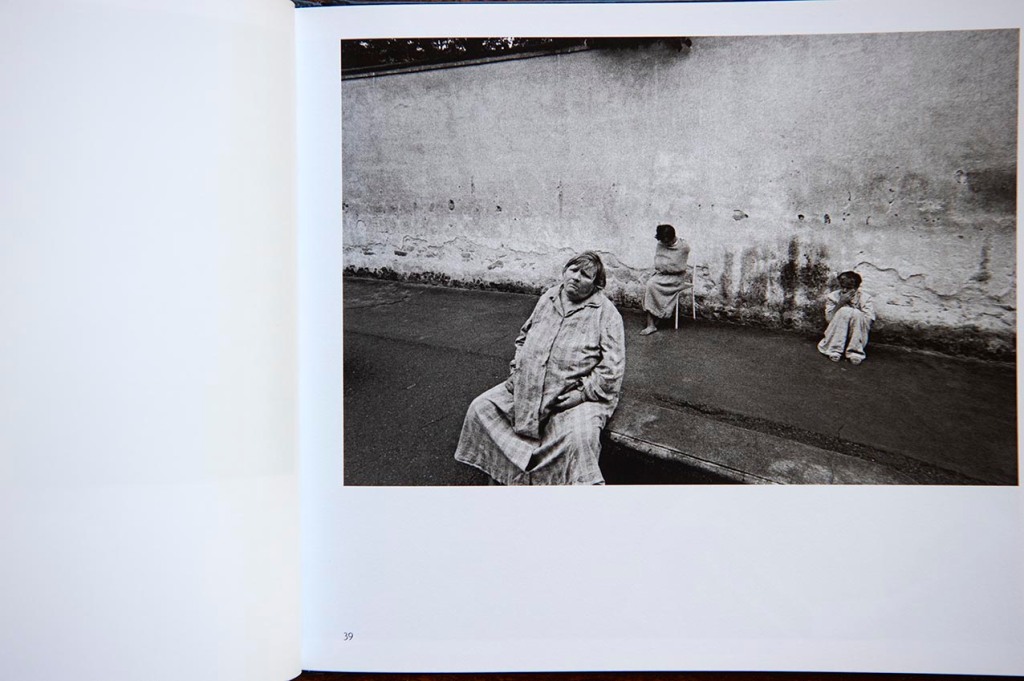
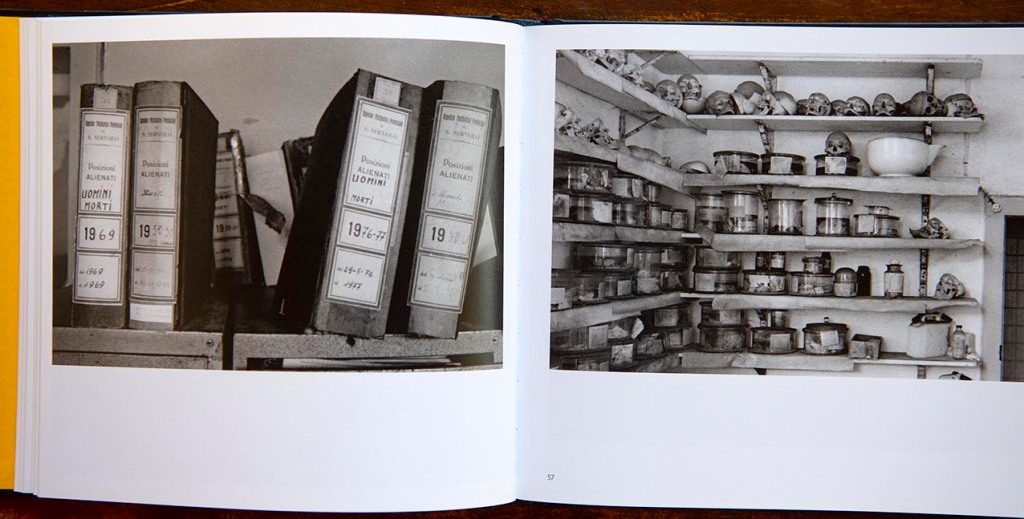
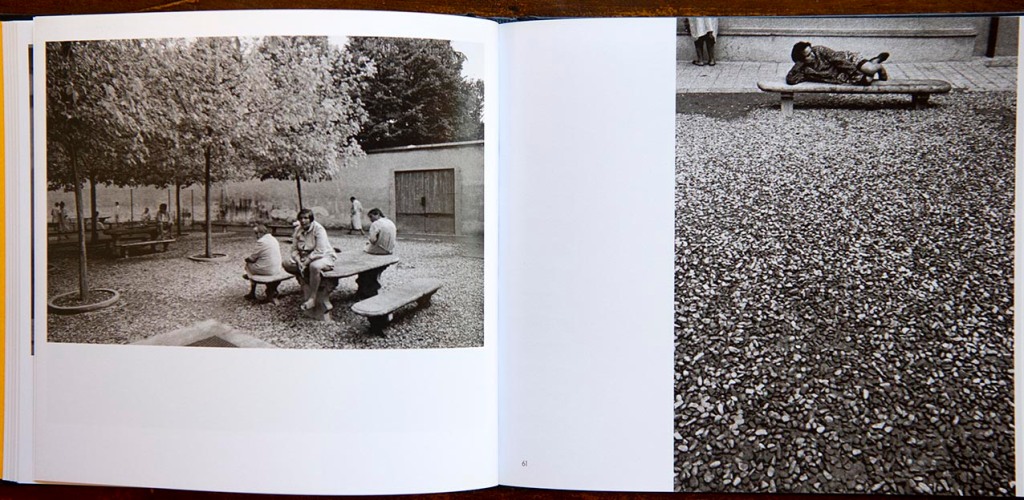
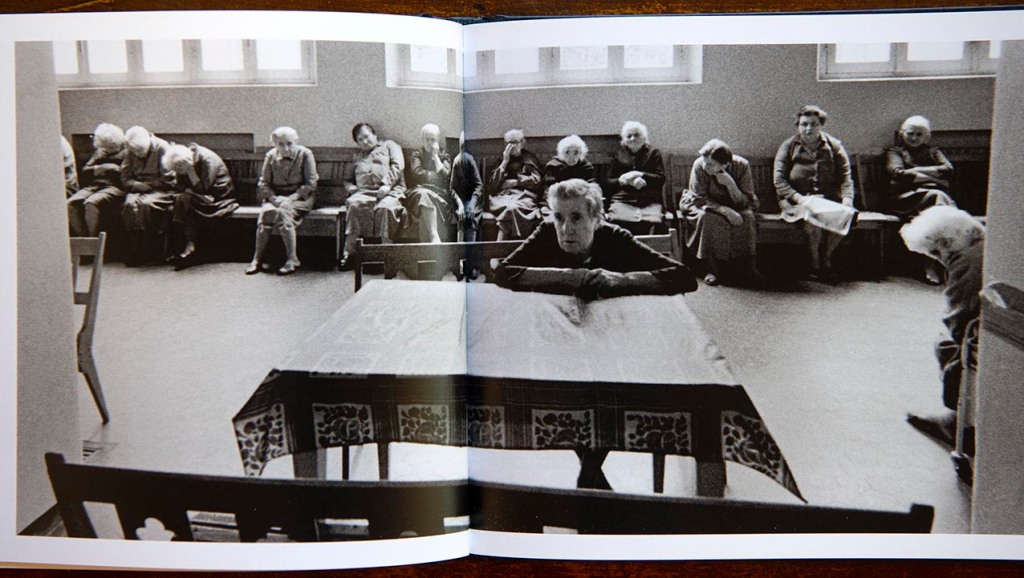
More or less from the same period, in Italy was published a famous book named “Morire di classe”, also published in 1969 with photographs by Gianni Berengo Gardin. I don’t have this book, but Contrasto published in 2015 a book with his photos from that period, named “Manicomi, psichiatria e antipsichatria nelle immagini degli anni settanta”.
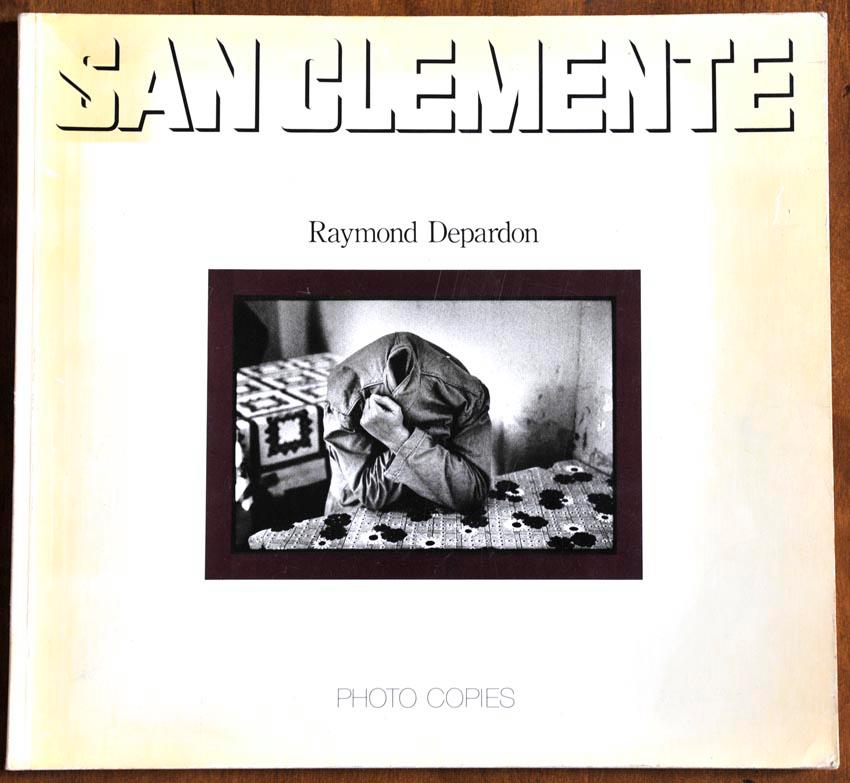
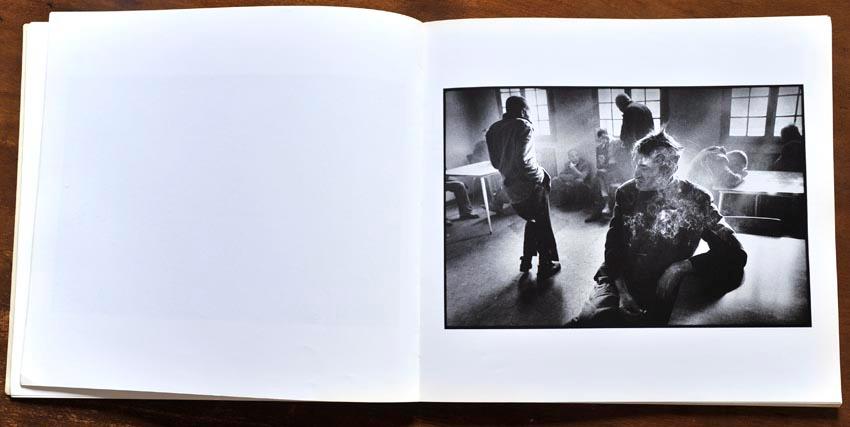
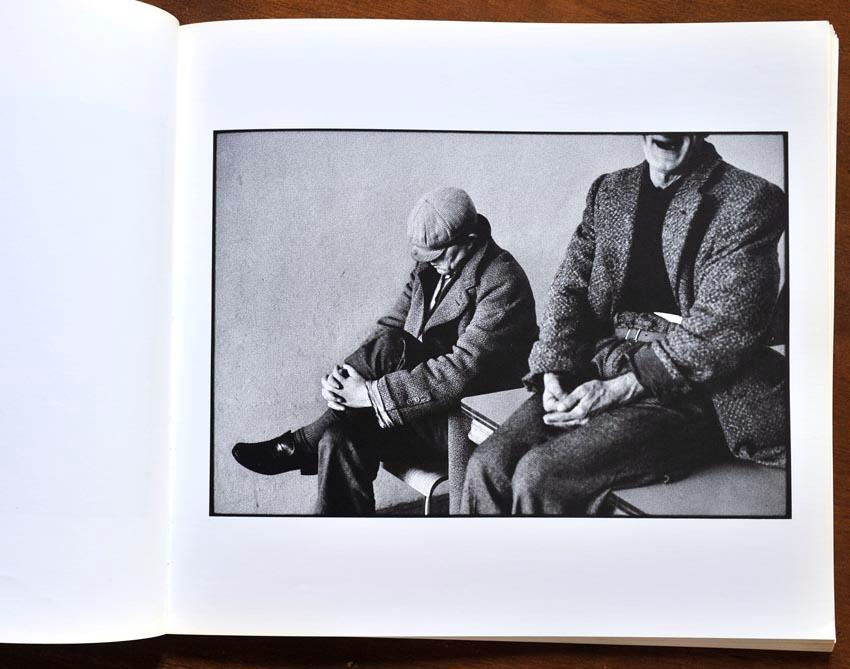
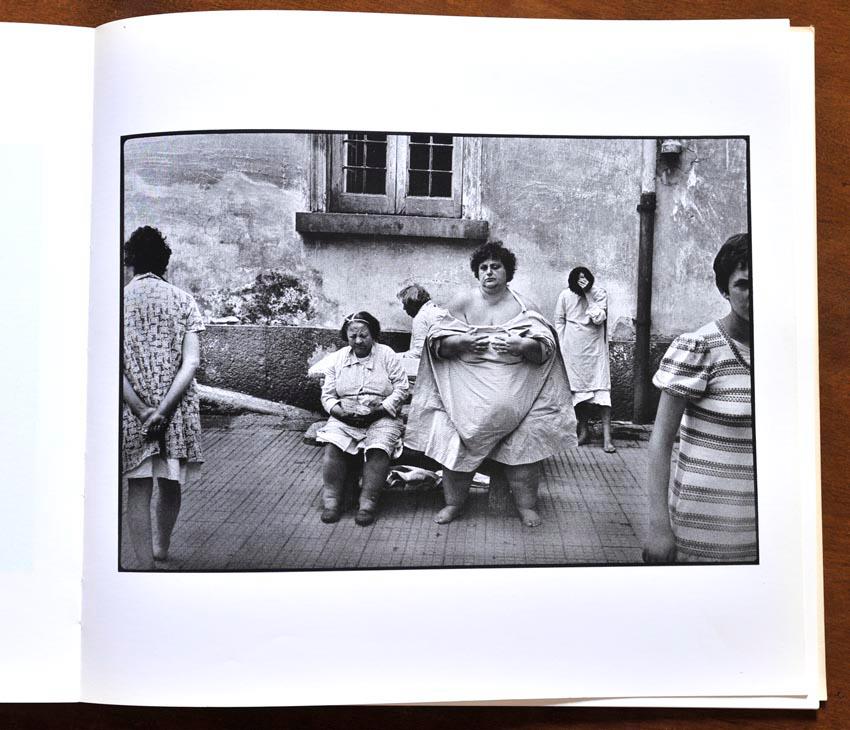
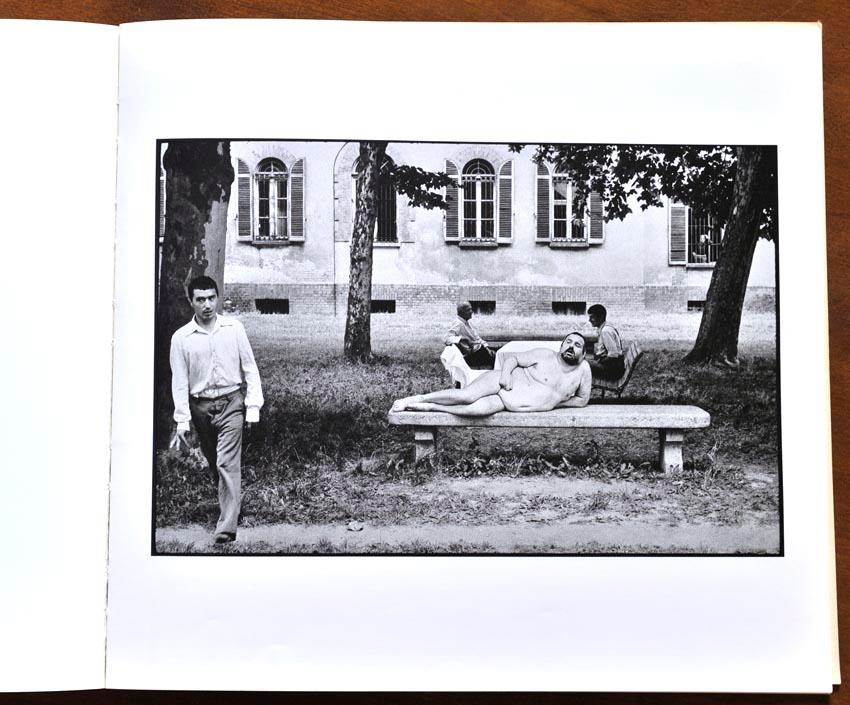
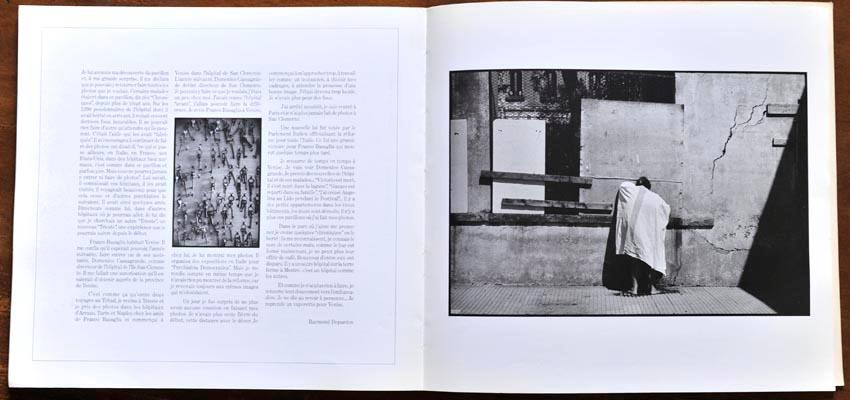
In the middle of the seventies, French photographer Raymond Depardon met Franco Basaglia in Trieste and started a series in the Venetian hospital of San Clemente. It was first published by the Cente National de la Photopgraphie in 1984. there was a new edition in 2014 by Steidl, under the name of “Manicomio”.
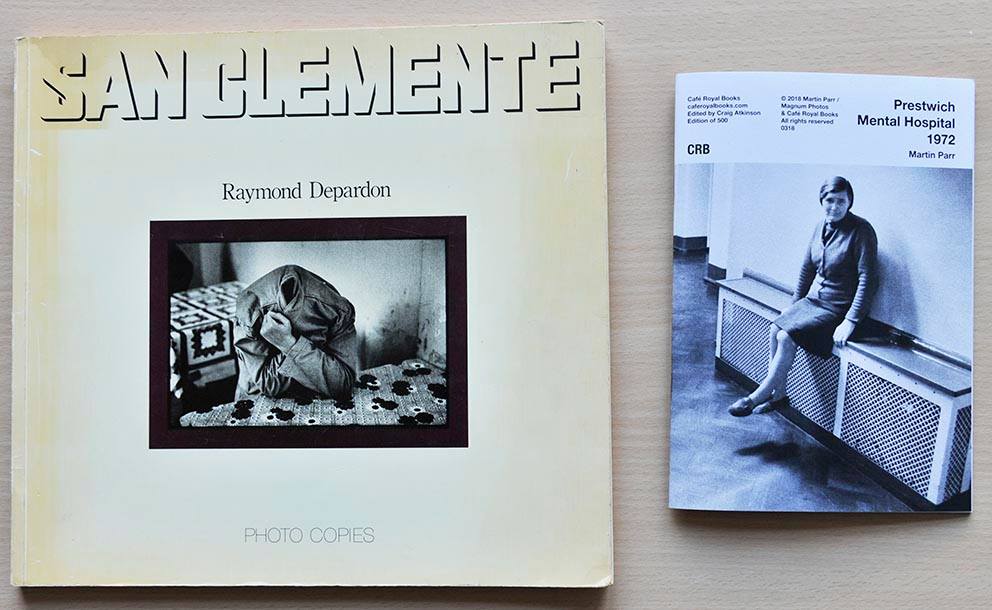
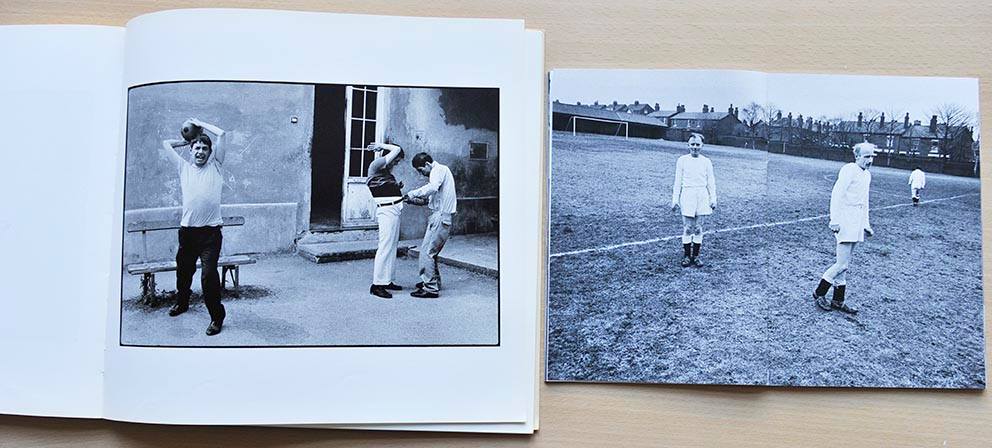
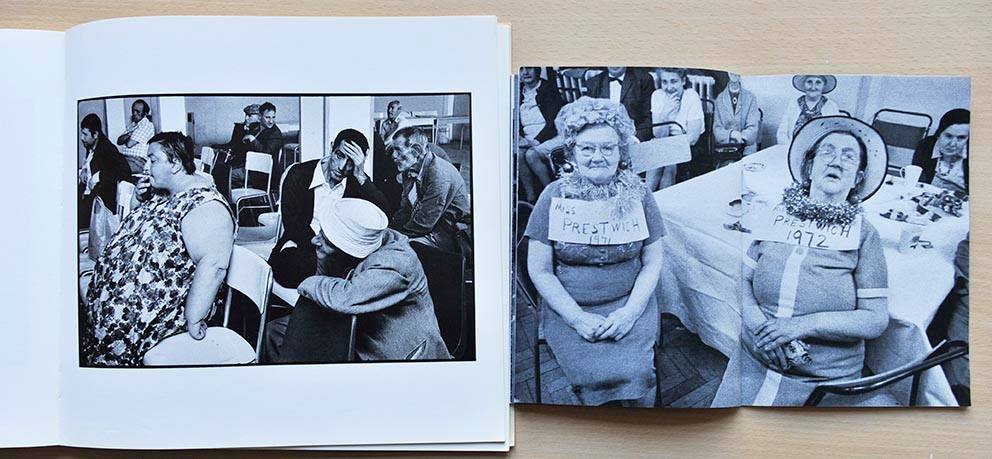
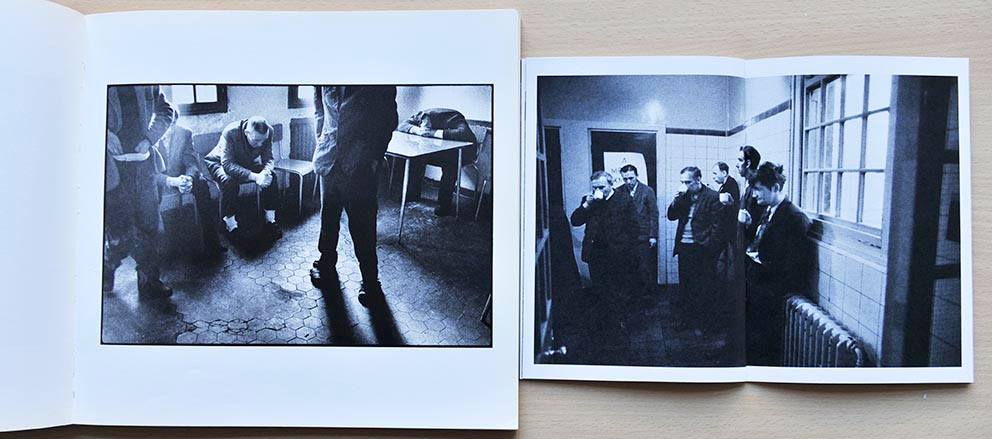
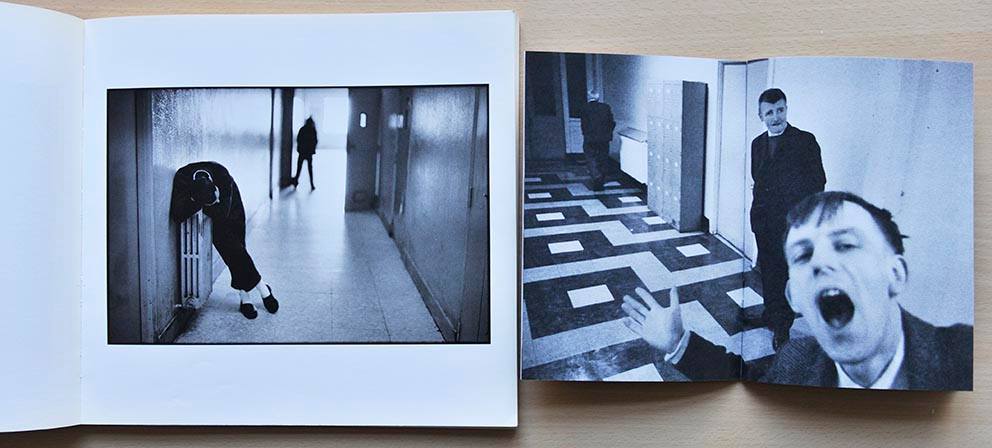
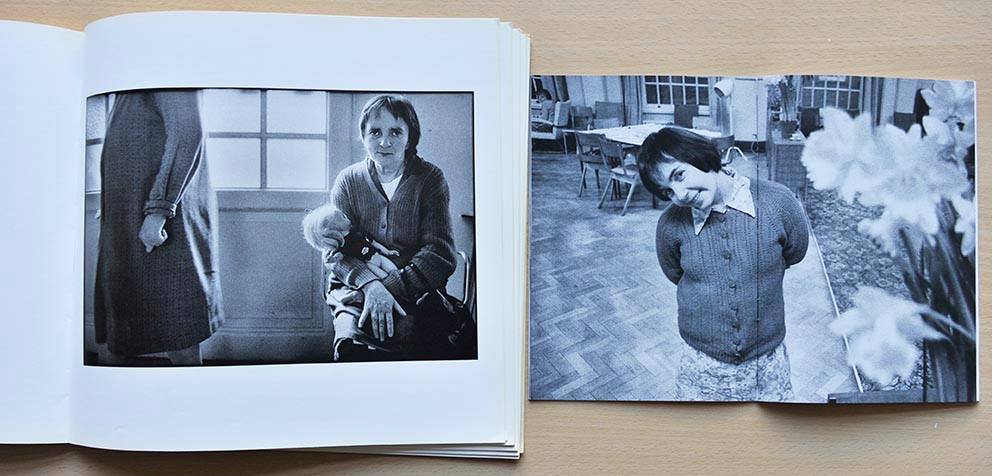
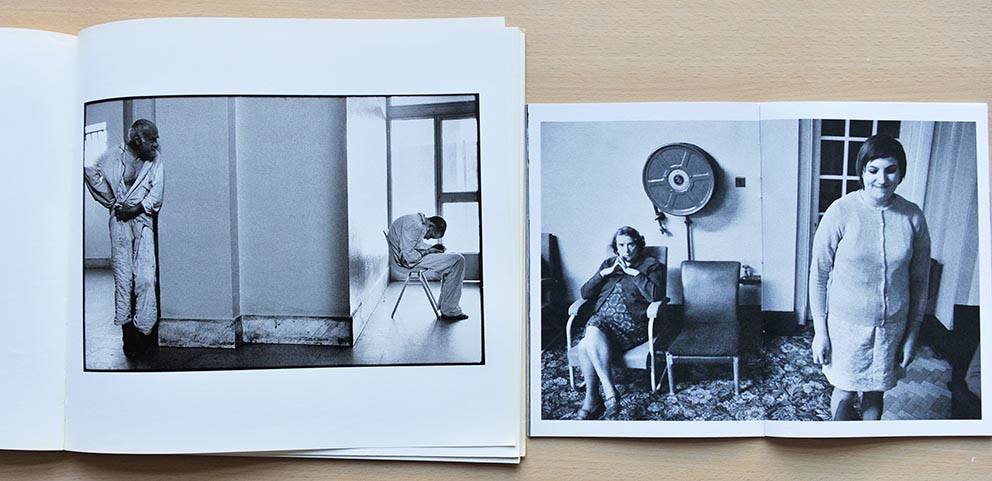
Martin Parr, more known for a different kind of photography did also a series of pictures in an English psychiatric institution, in 1972, in Prestwich. I played a comparison game between Raymond Depardon and Martin Parr works here above. The book was published in the fantastic collection of Café Royal Books in 2018.
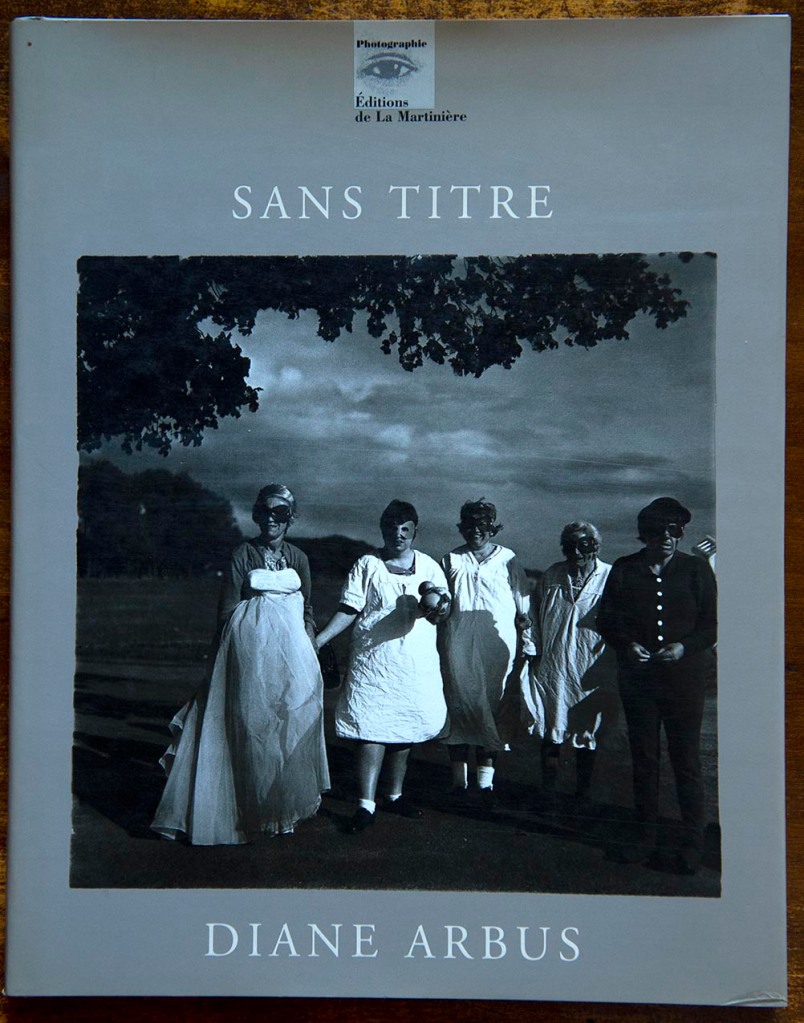
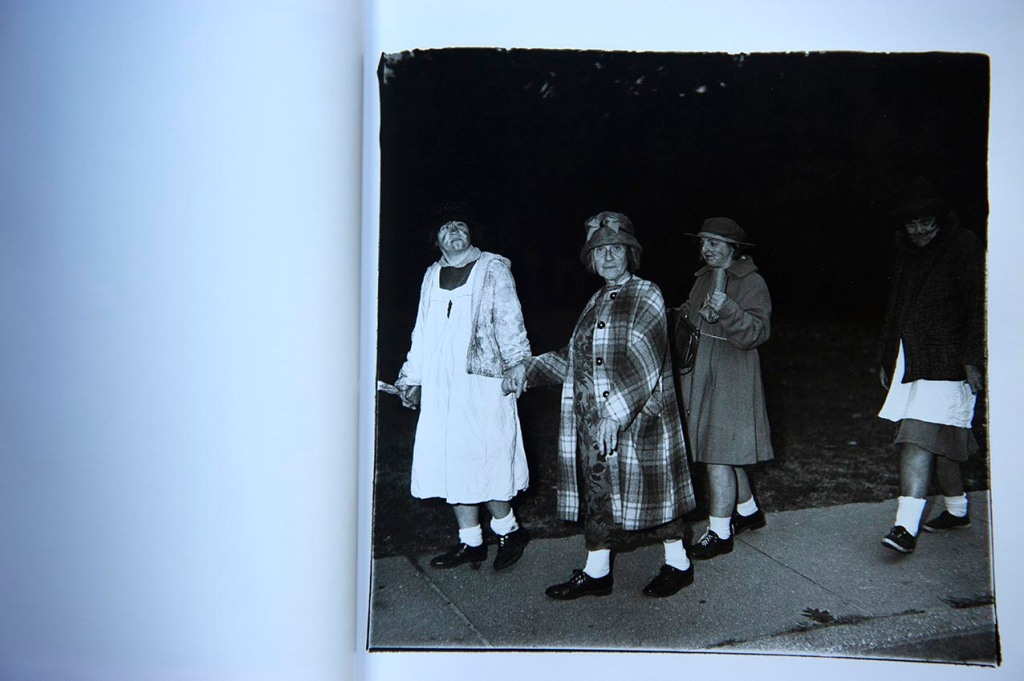
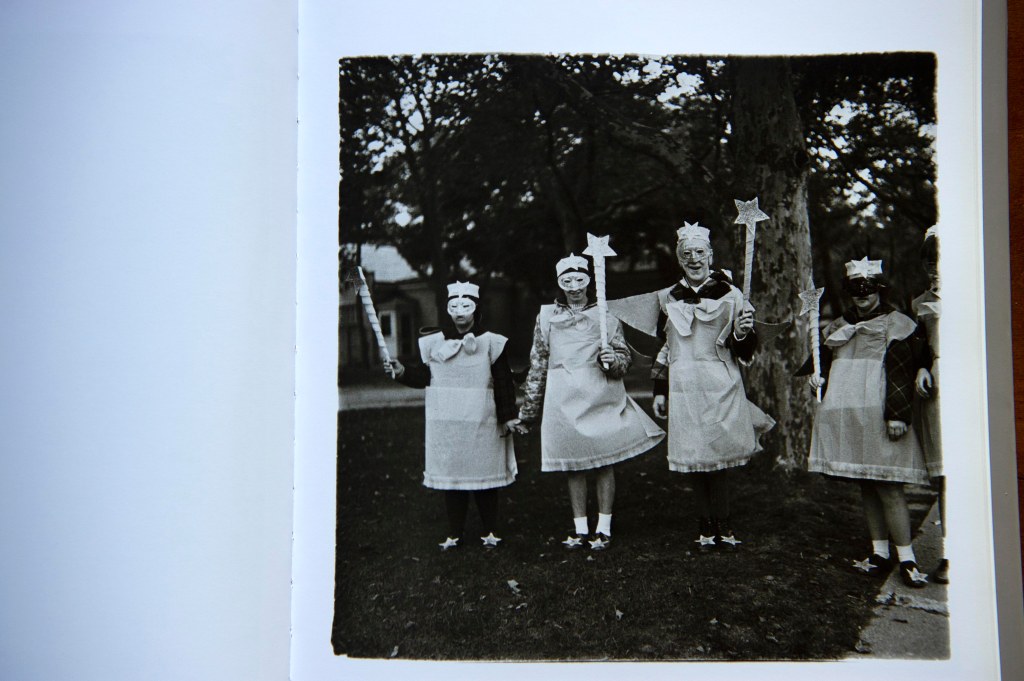
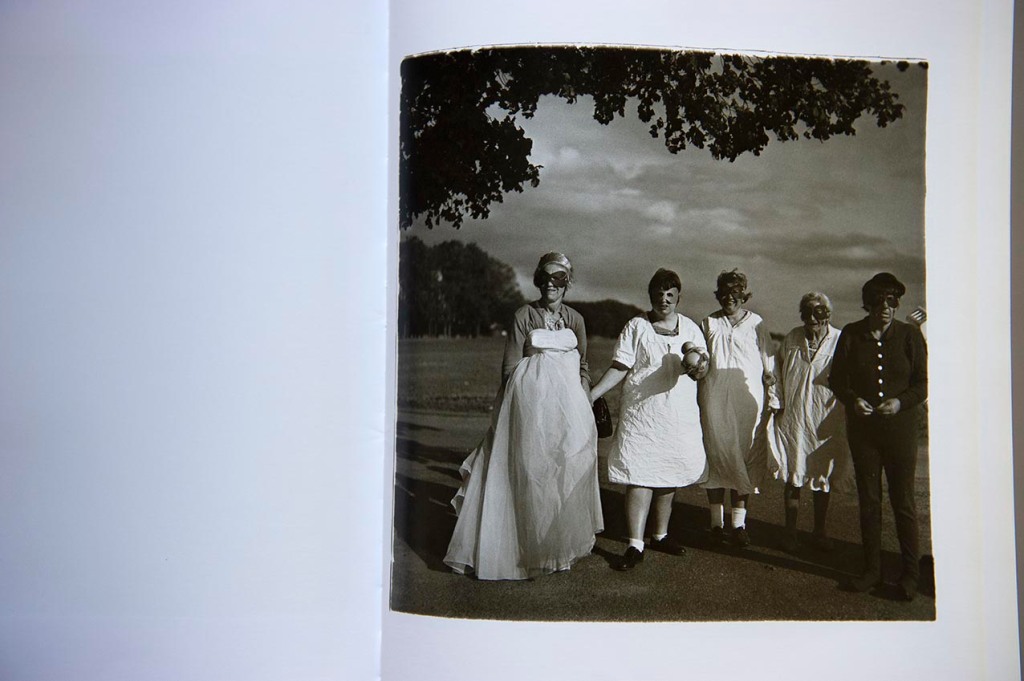
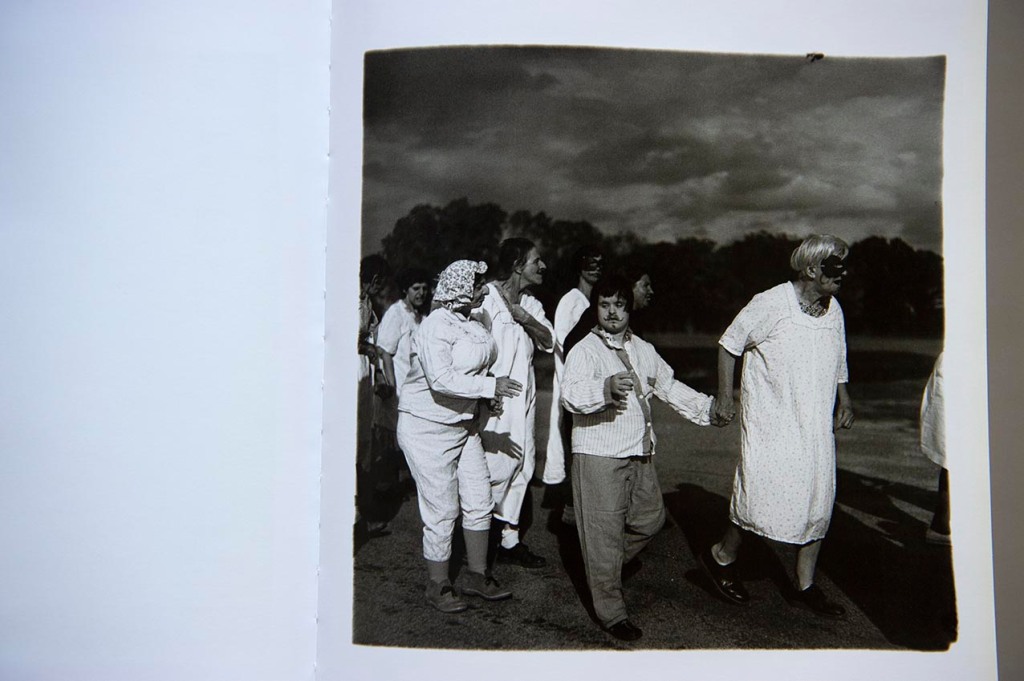
I could not do a post like this one without mentionning Diane Arbus work with mentally handicaped people, published under the title “sans titre” in France in 1995 by Editions La Martinière. This work was also done at the end of the sixties, not so long before she commited suicide in 1971.
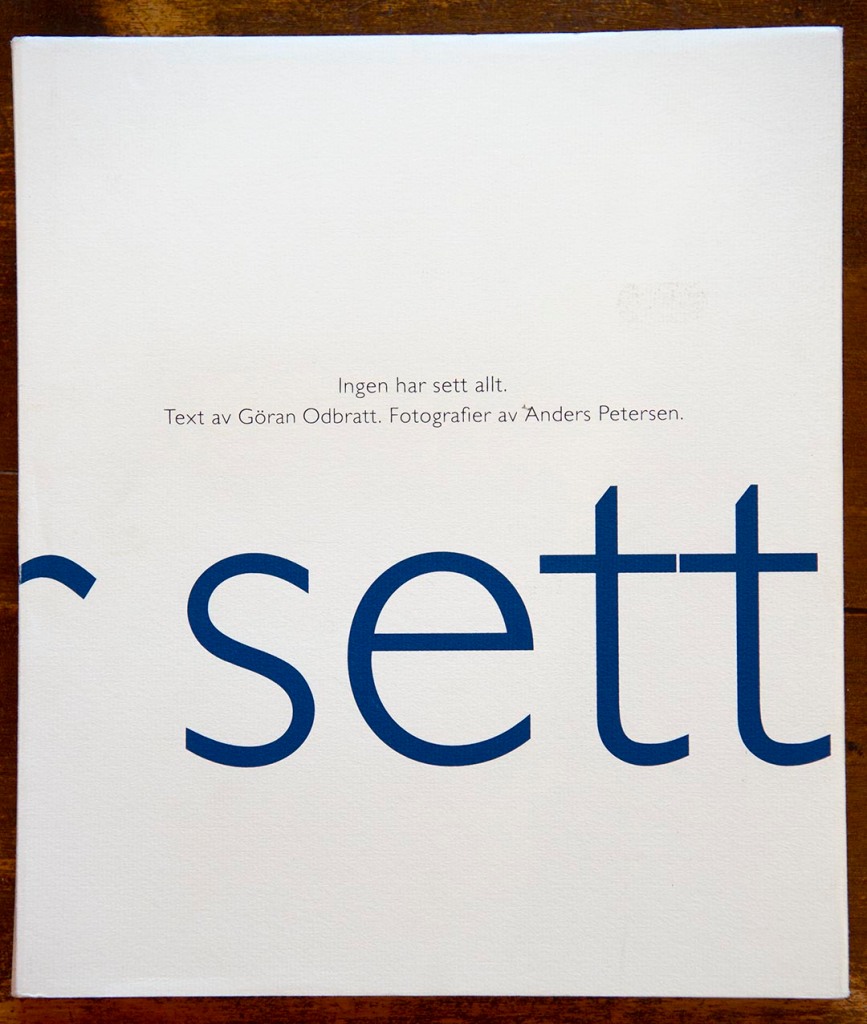
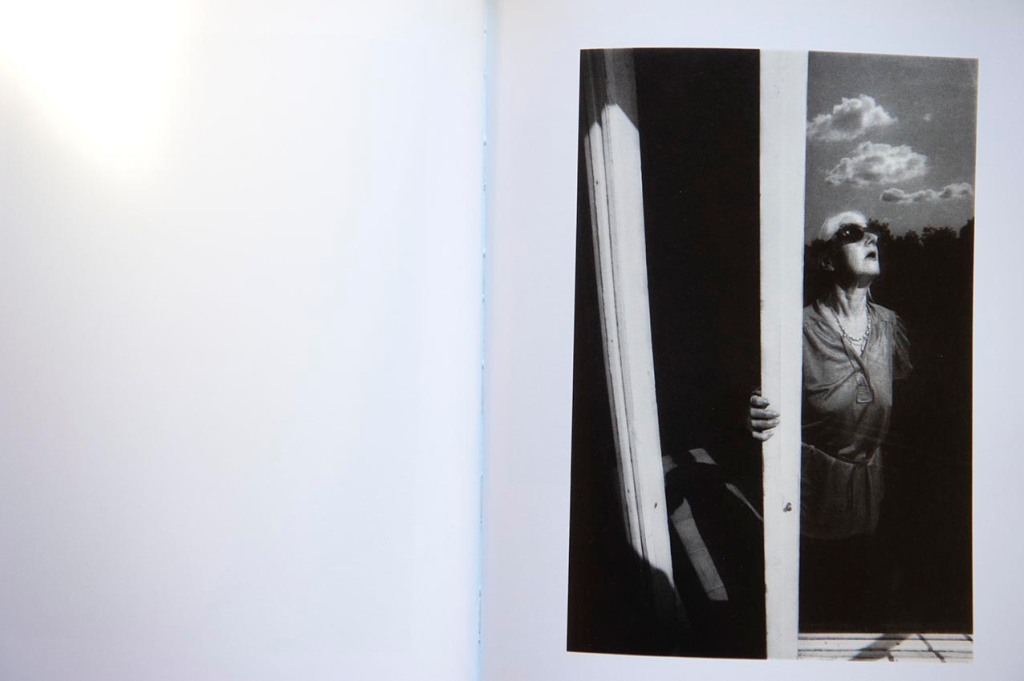
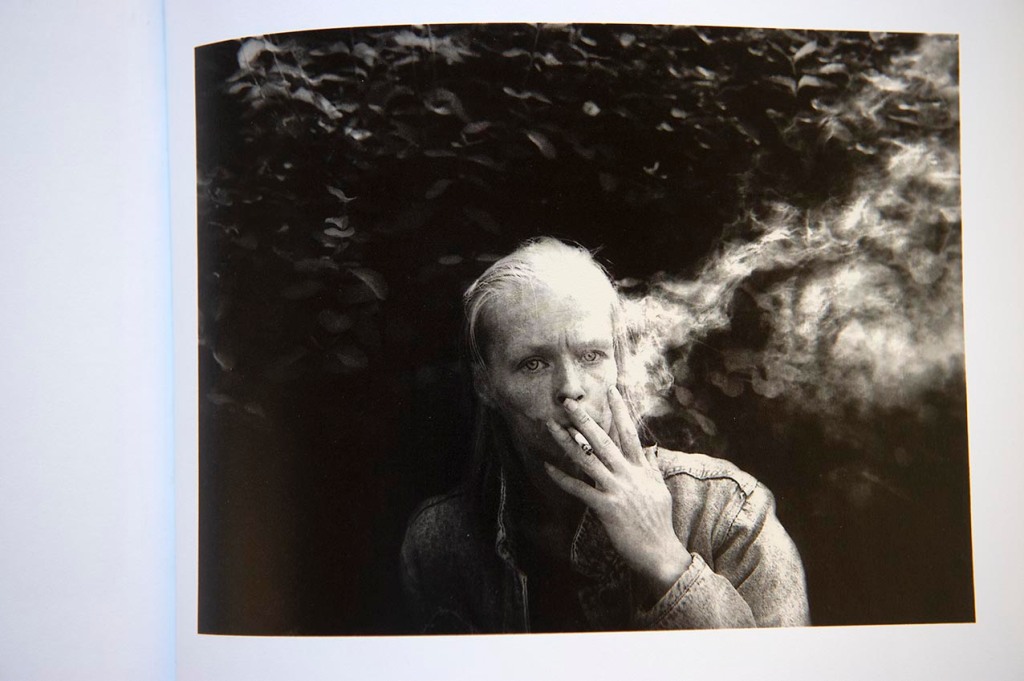
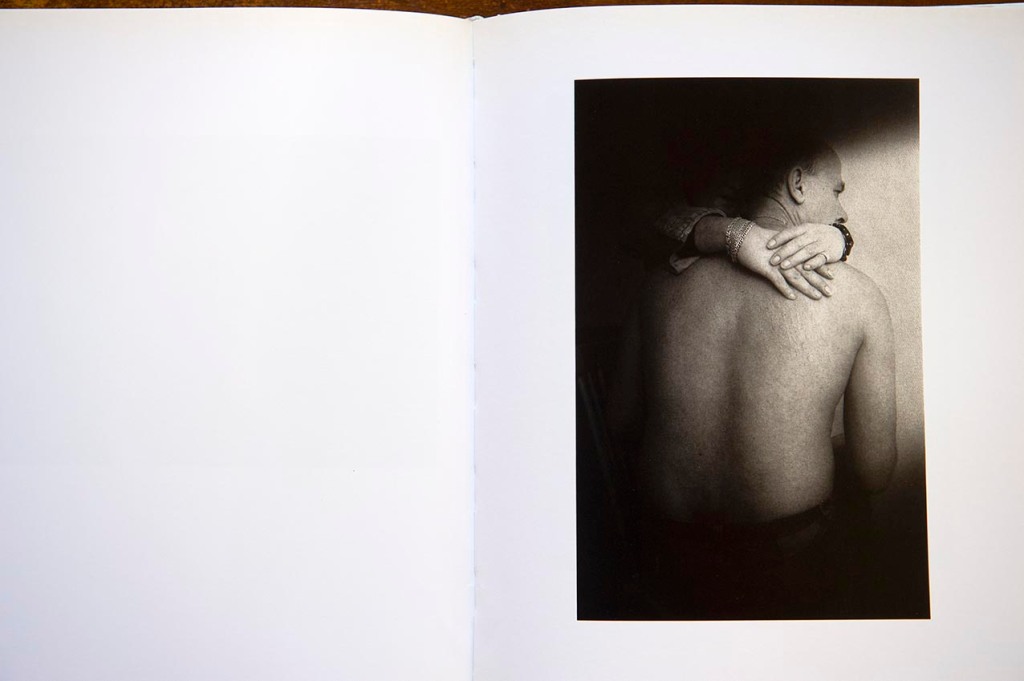
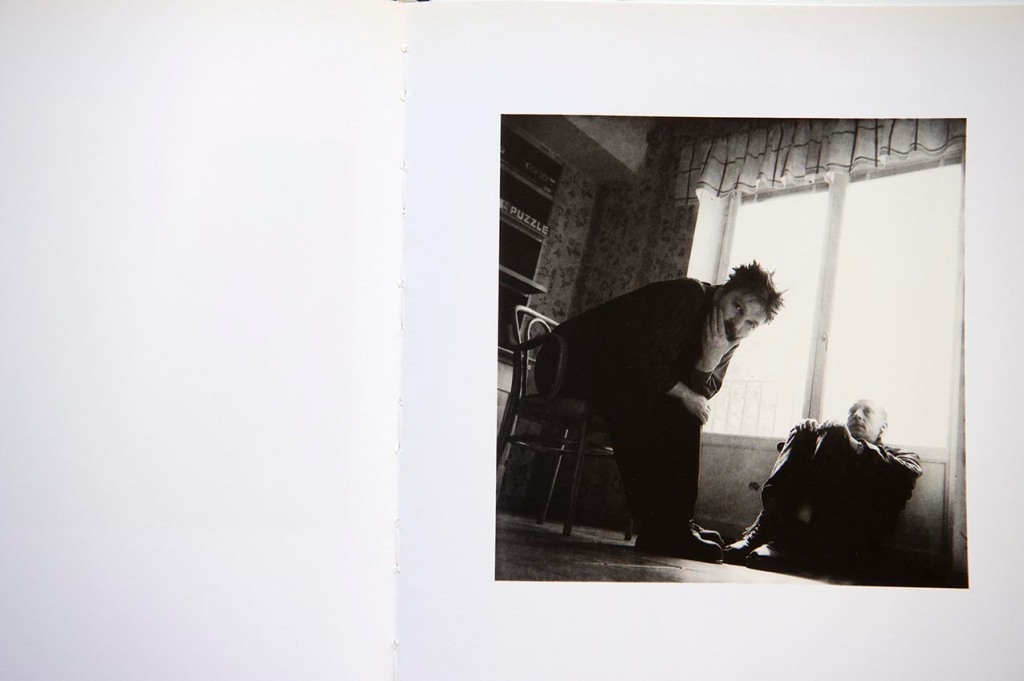
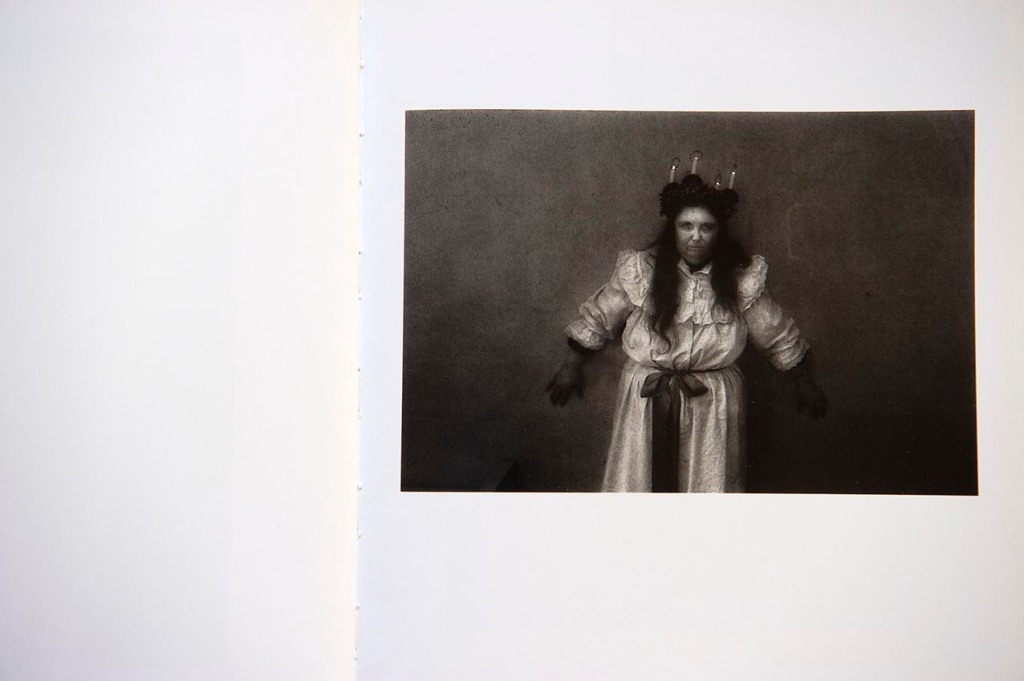
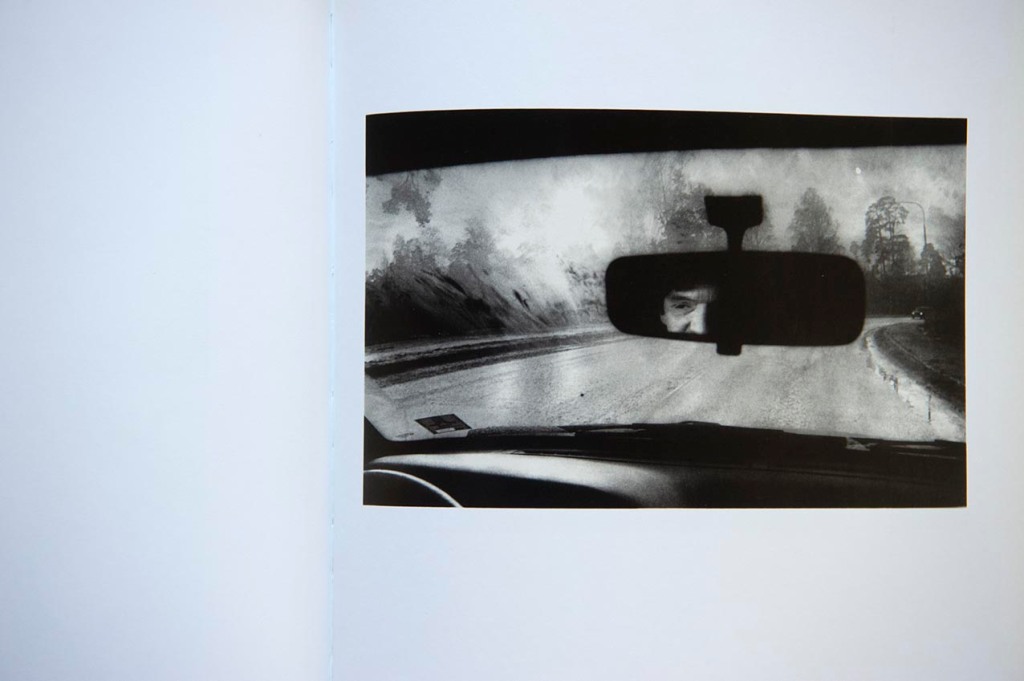
Legus Förlag published in 1995 “Ingen har sett allt” by Swedish photographer Anders Petersen. In my opinion, I consider this work as one of his strongest, far before Café Lemitz.
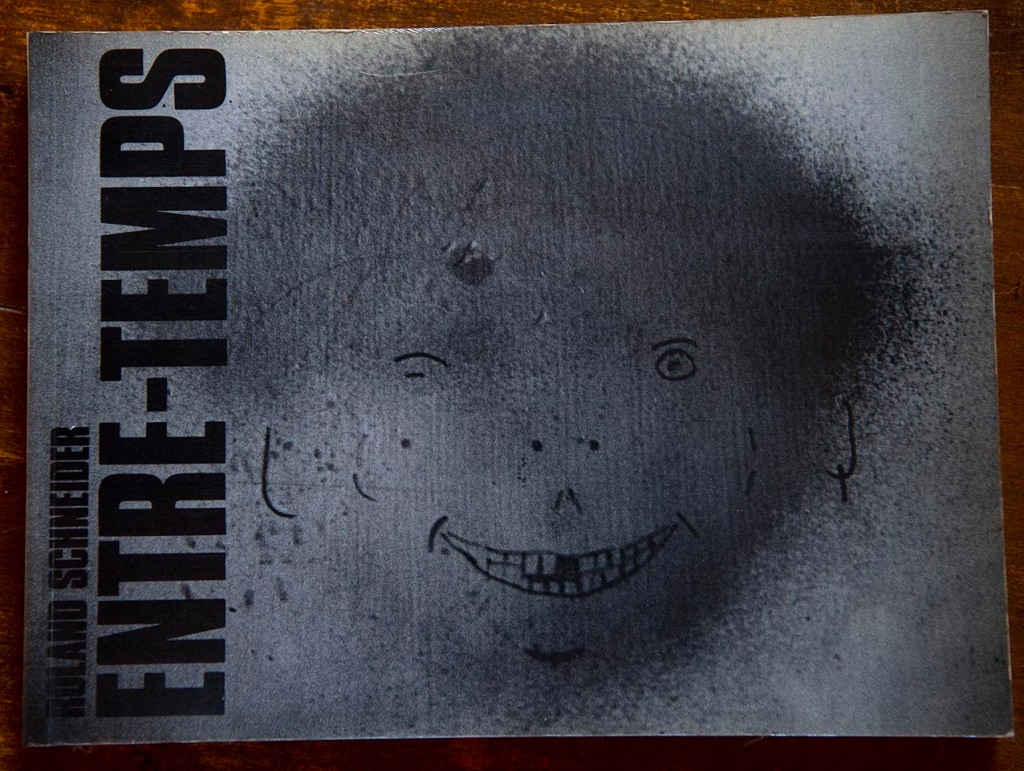
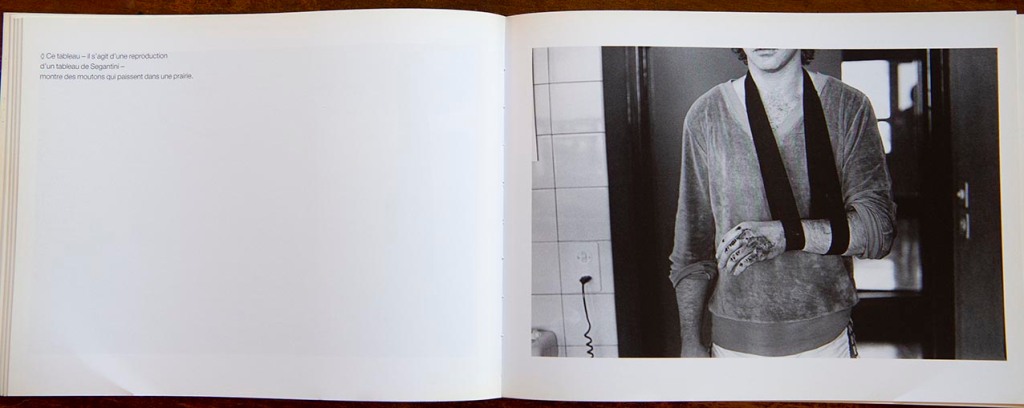
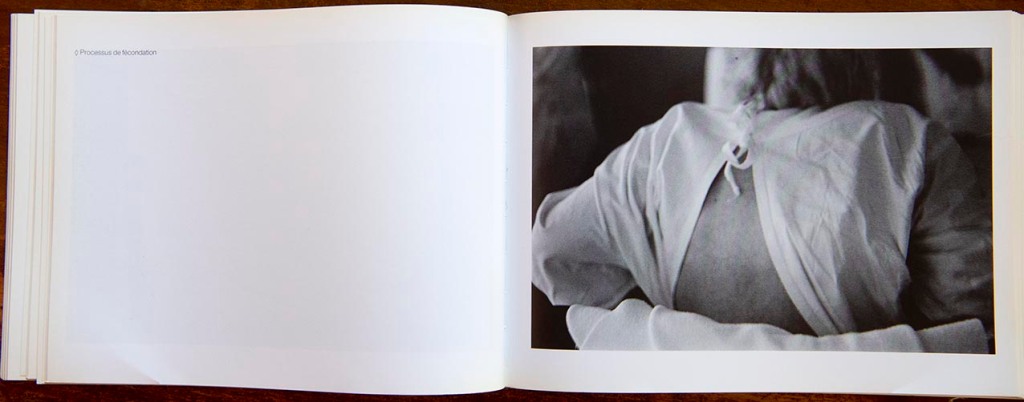
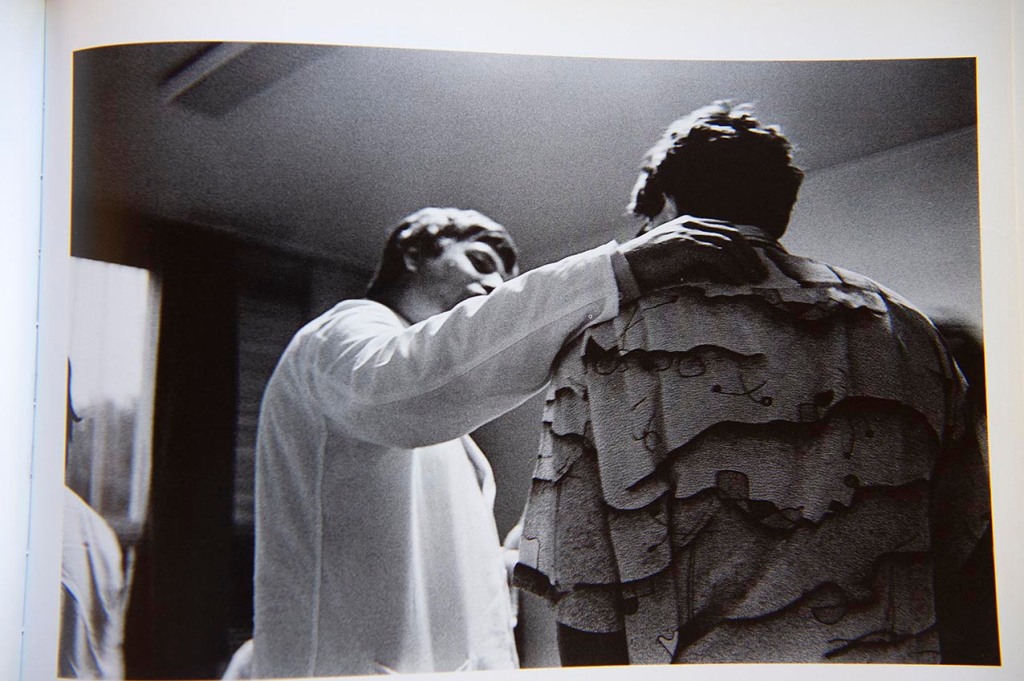
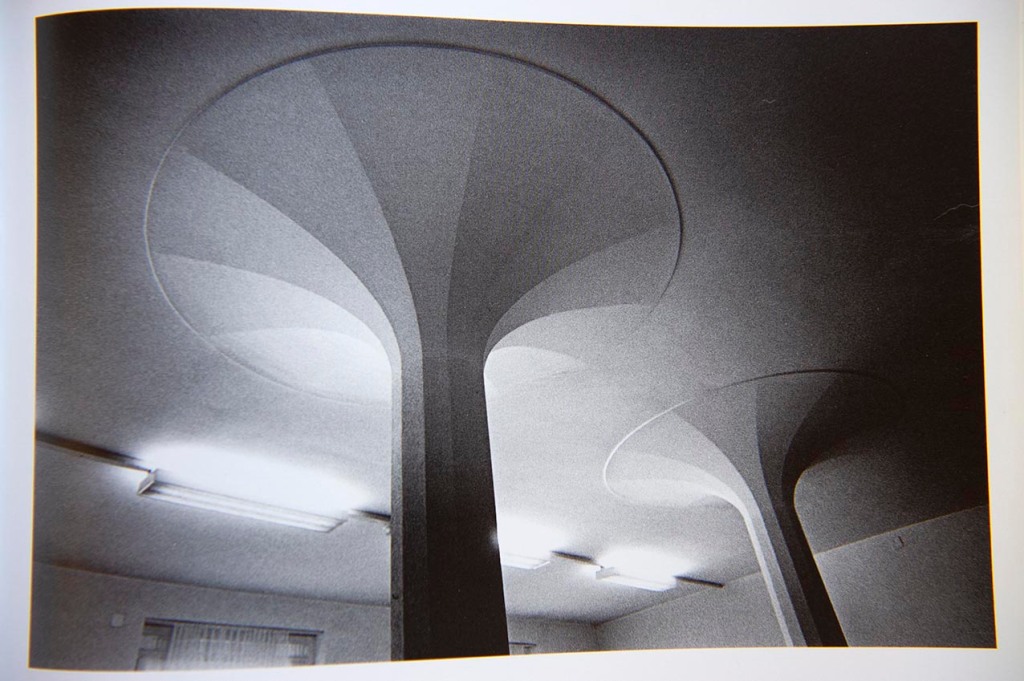
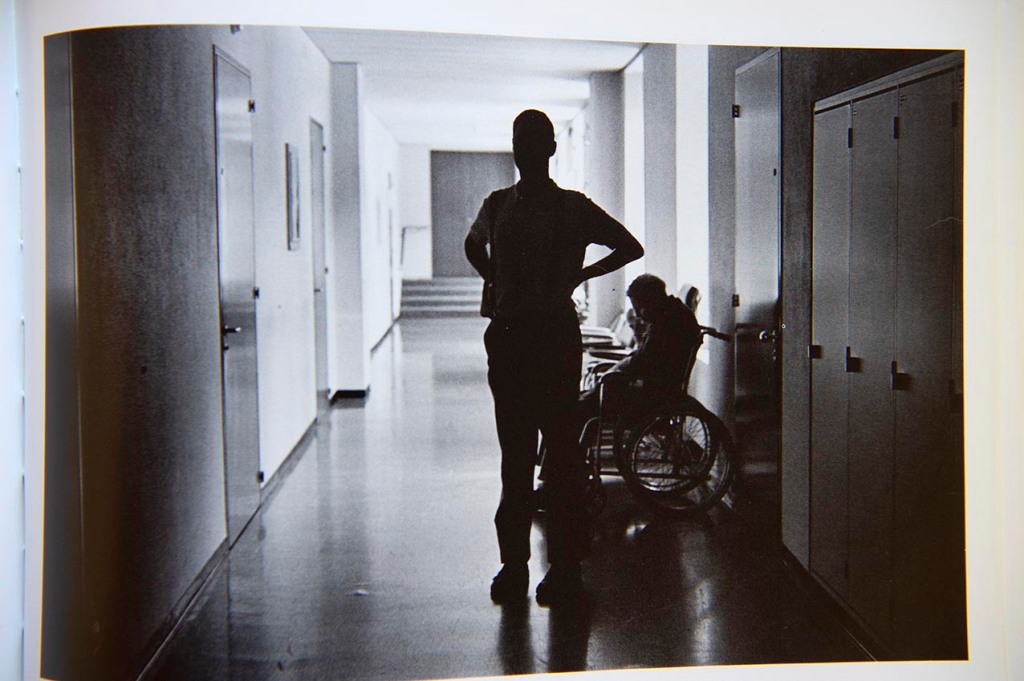
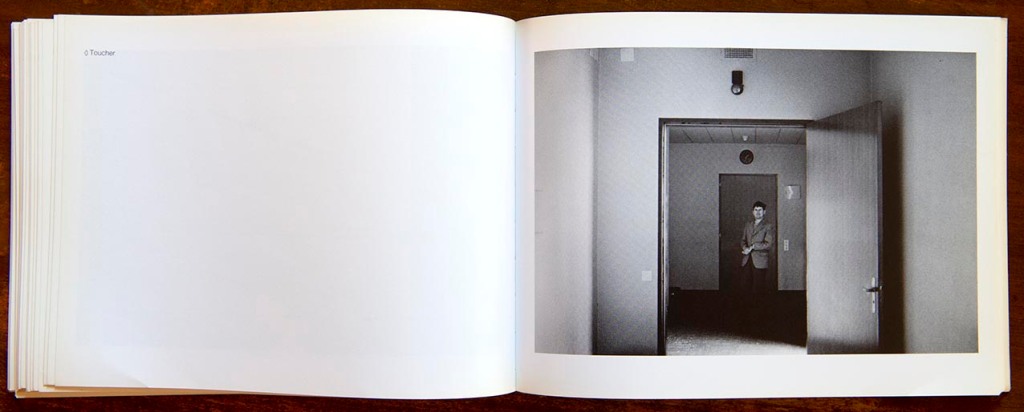
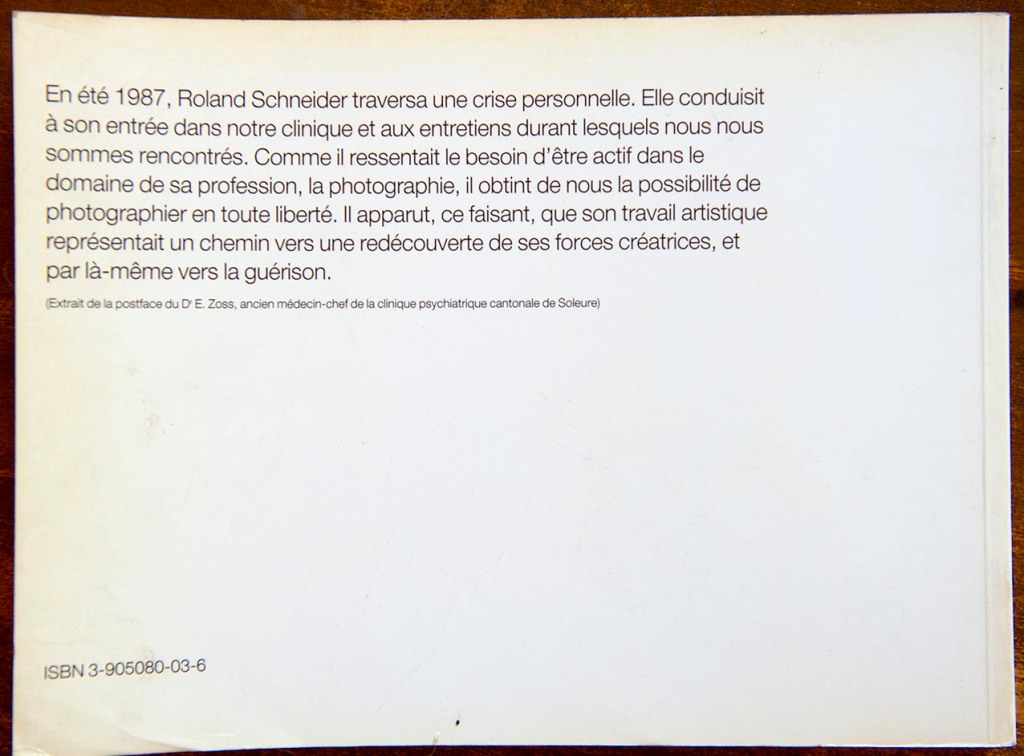
I discovered Roland Schneider’s work while studying photography and I was really impressed by its therapeutic dimension. This was a time when I used to work with mentally handicaped people and I was moved by this work. From the collection of the Musée de l’Elysée in Lausanne, the book was published by Parkett/Der Alltag in 1988 and this one has always been one of my favorite book !
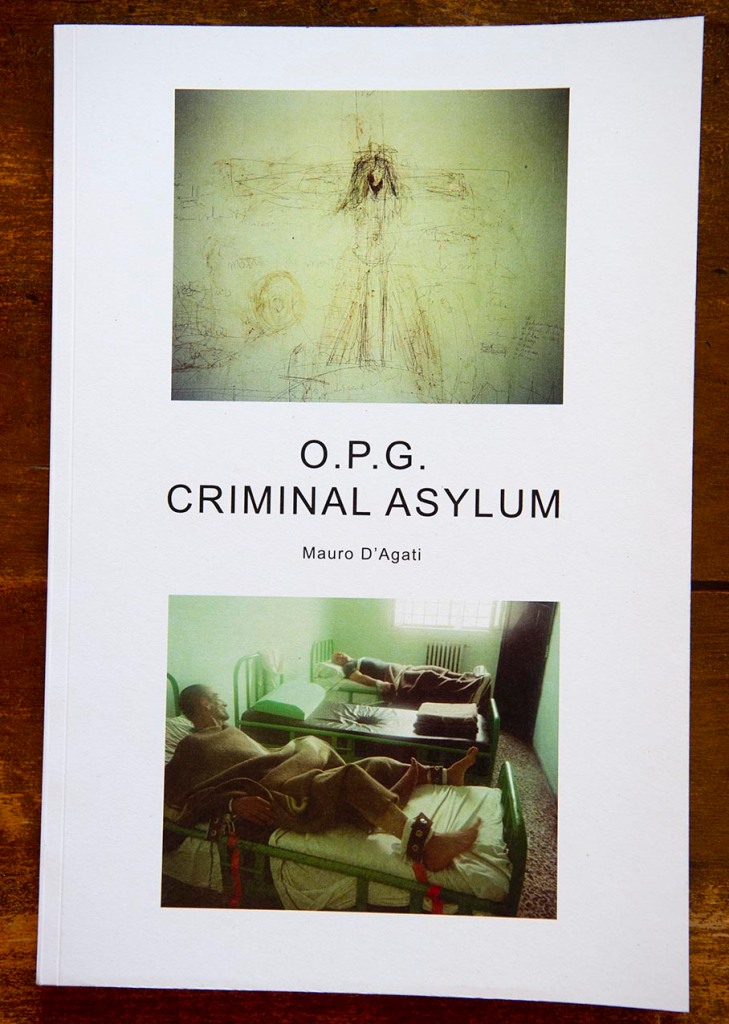
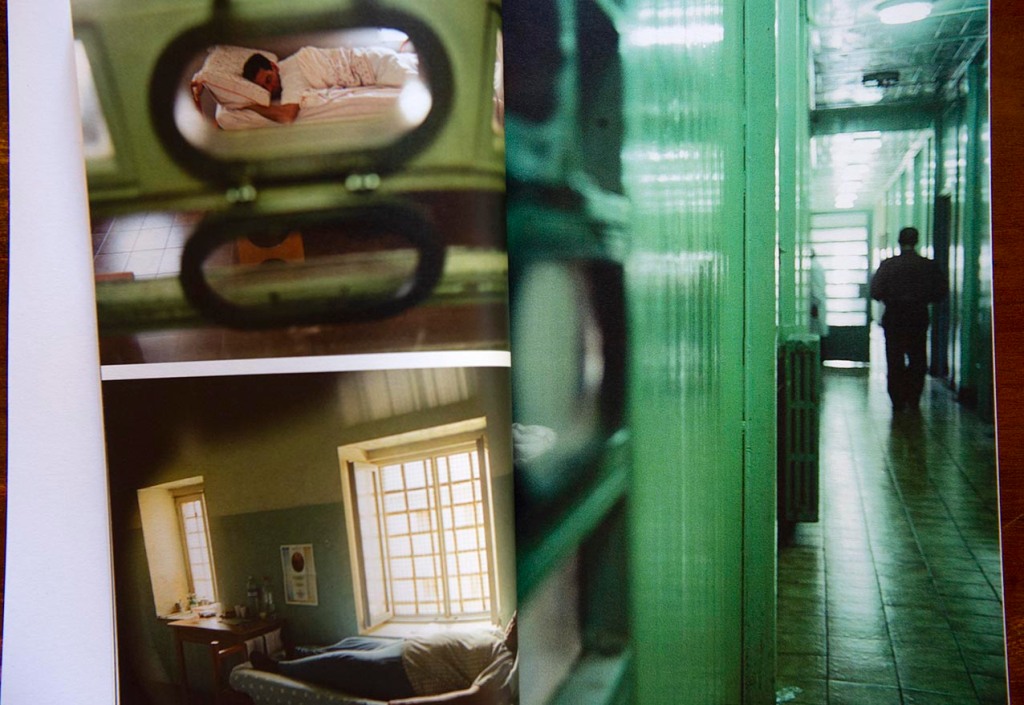
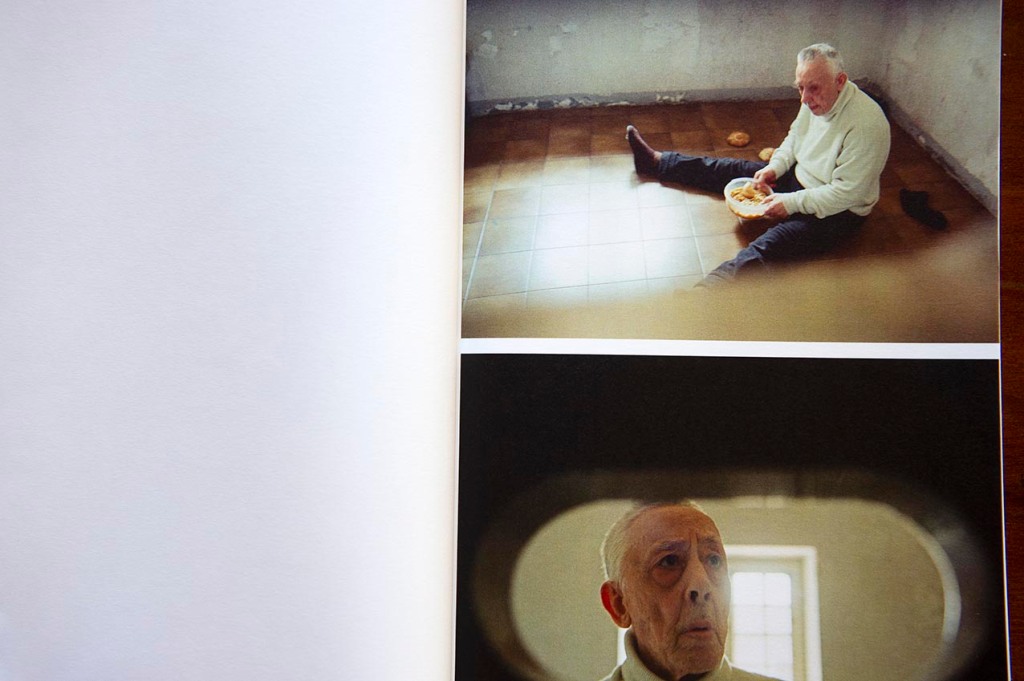
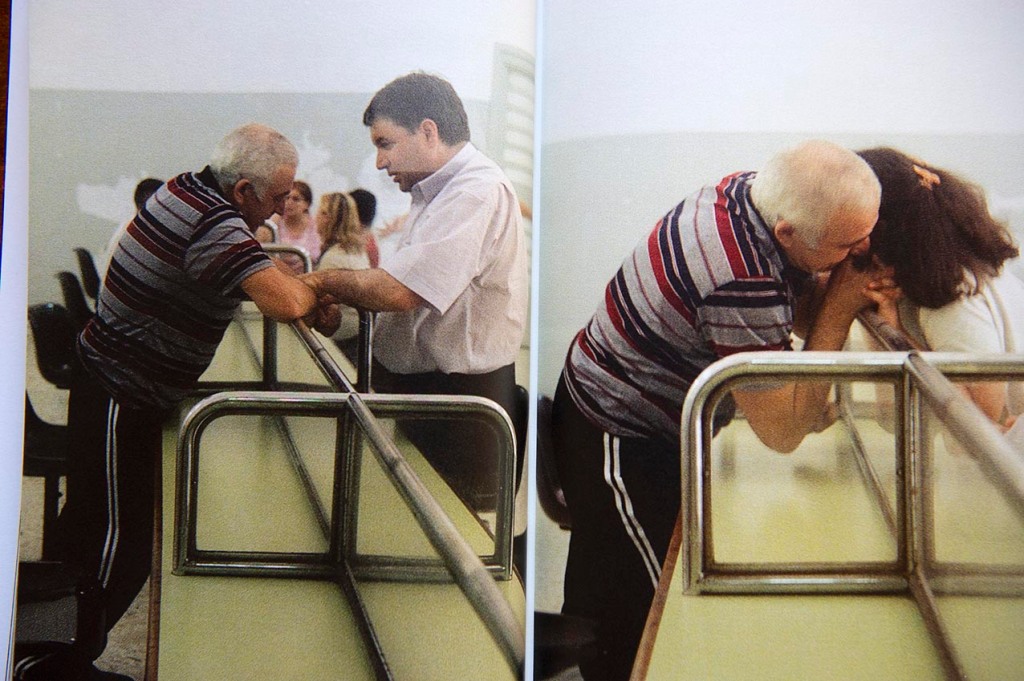
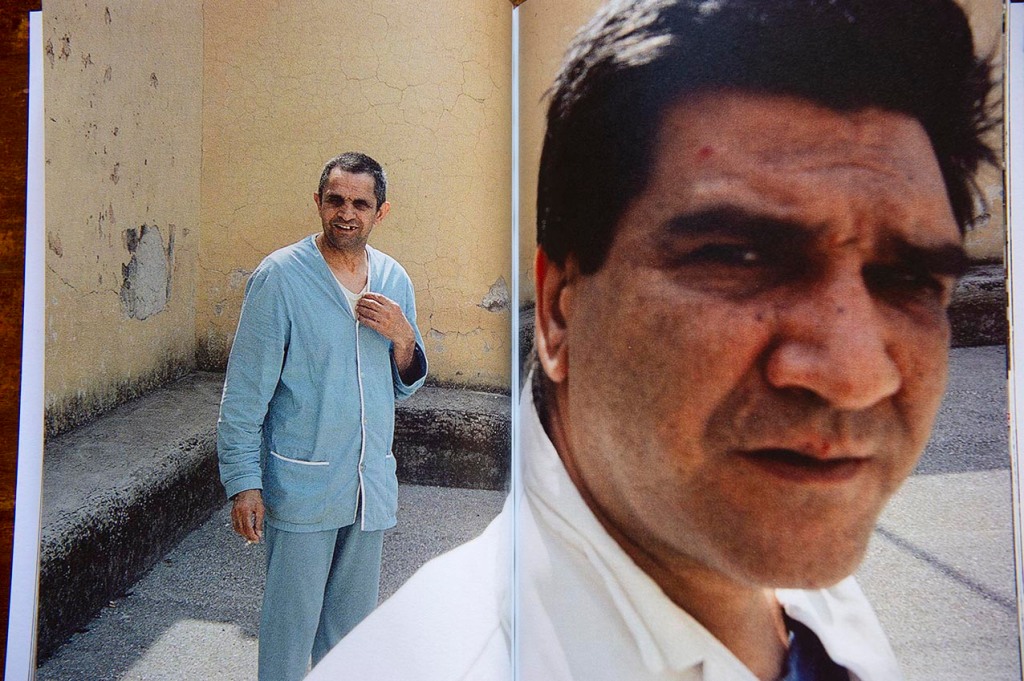
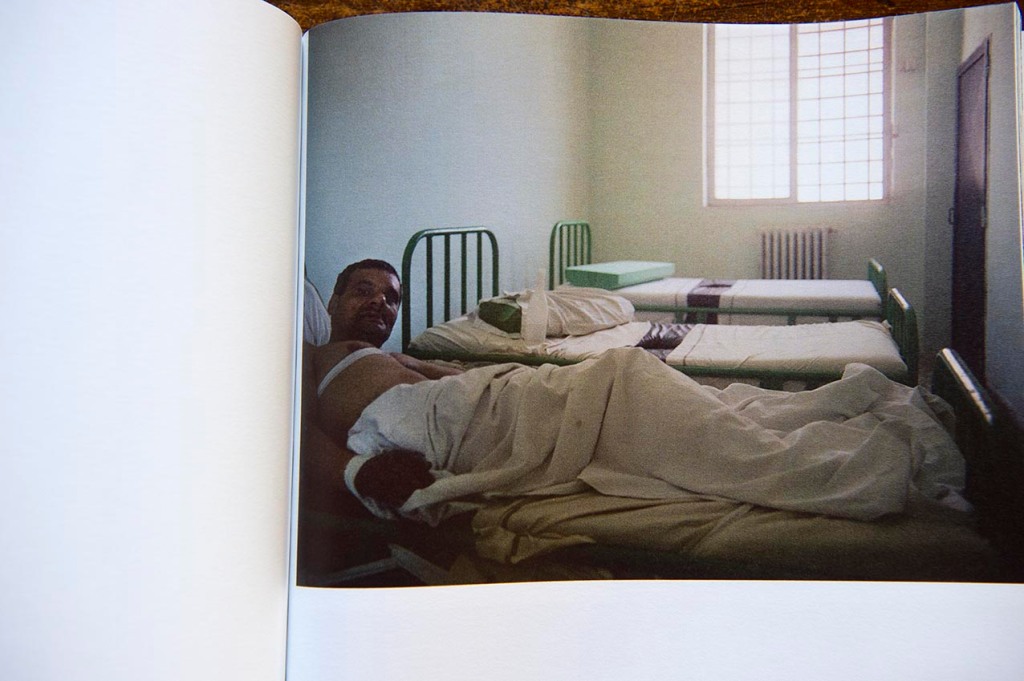
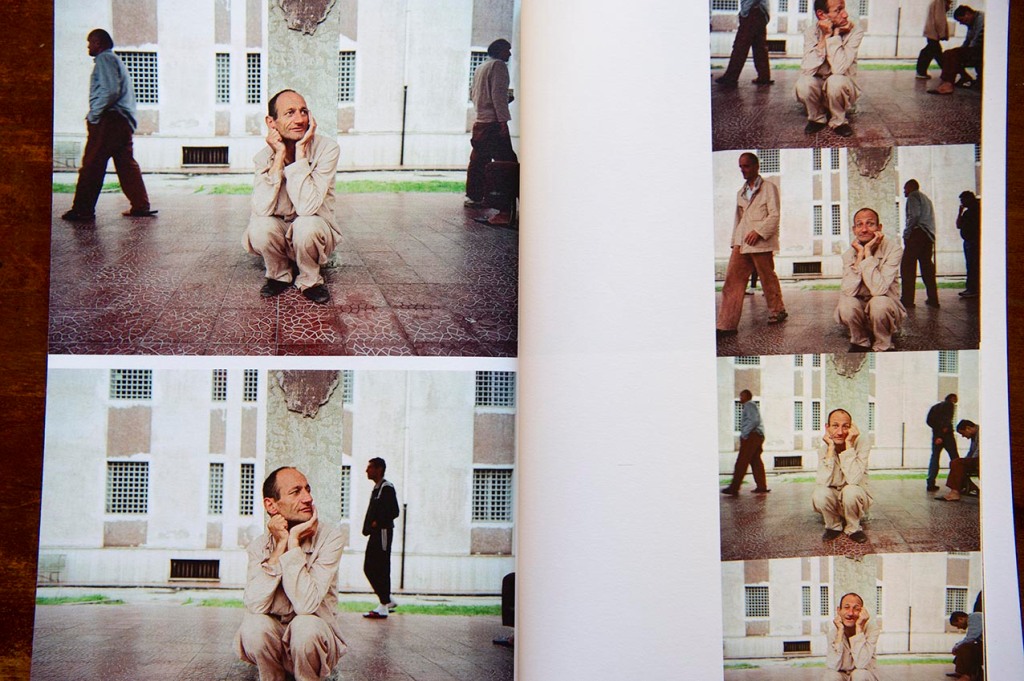
This book could be considered as the last opus in the anti-psychiatry Italian history. Published this year by 89 Books, it compiles photographs by Mauro d’Agati. The photographs were made in 2001 after that in the mid seventies, the O.P.G. (Ospedale Psichiatrico Giudiziario) model replaced the old criminal asylums.
So, despite, what I said in introduction, I haven’t been that short but I am passionate by this topic, and you may understand why in a future post !
Happy/Brooklyn 1988-93 by Nina Korhonen
Posted: May 30, 2019 Filed under: Photobooks, Photography | Tags: Conet Island, Etats Unis, Finlande, Finnish photography, Finntown, Happy Brooklyn, New York, Nina Korhonen, Sweden, Tira books Leave a commentOr the tribulations of a Finnish girl in New York …
Apart from the Native Americans, the United States are almost exclusively inhabited by descendants of migrants. The waves followed one another according to the European temporalities (starvation, religious reforms …), the Finnish community in New York was mainly established during the first half of the 20th century, settling notably in Brooklyn.
In 1988, Nina Korhonen was studying photography in Stockholm, when she begin visiting her grandmother in New York. She wants to document the history of this community ; she takes pictures, speak with people, listen to their stories with empathy, to understand a part of the story she comes from.
We are dealing here with a slow photography, close to the subjects. Nina lives among this community ; on weekends she goes to Coney Island which becomes, at the same time a public space, an agora and a playground. People walk there, meet there, or show up, sometimes in poses that could be ridiculous if they were not there to remind us that a society is permanently a game of seduction in our relationship to others.
There is also a lot of privacy in this photographic work, when the night comes, the lights fade and the interiors light up, whether in a kitchen or when the sound of The Laiho Brothers with their accordions starts to be heard in the ballroom. Choreography at the scale of a neighborhood in which everyone will find his place. However, Nina does not forget the decor in which the scene is played, the subway, the street, the water, the beach, this impression of déjà vu cinematographic. We can easily imagine Matti Pellonpää and Kati Outinen, after having emigrated to the United States, finding themselves, at the sound of the accordion, in a dialogue straight out of a Kaurismäki film. We also think of this other story of Hungarian migrants in “Stranger than paradise” by Jim Jarmusch. But we also find the fascination for people, caught in the simplicity, even the naivety of their daily life which impregnated “The Americans” by Robert Frank.
Nina Korhonen work is refreshing in a photographic world that has now moved, sometimes with excess, into a conceptual environment. Here we just share moments of daily life, which tell a story written in the past, but strongly rooted in the present and which leaves us with the impression of having spent a few days with friends… and back again, the tune of the accordion that still resonates in our head.
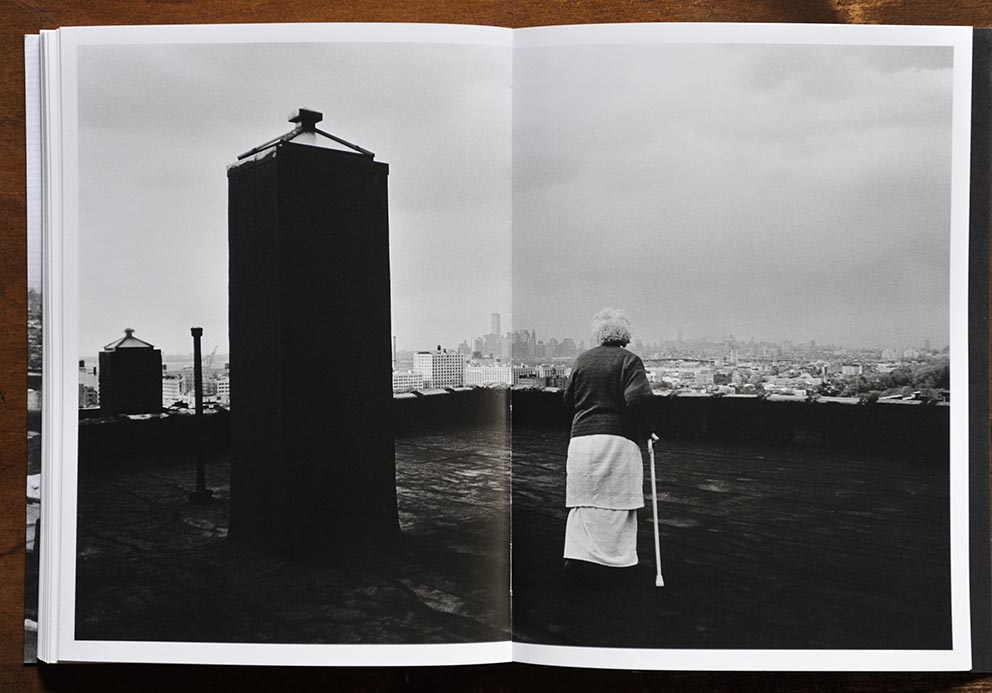
Night falls on Brooklyn now. Tomorrow, if the weather is nice, we will go to the beach…
——————–
Happy/Brooklyn 1988-93, softcover published by Tira Books, a new Swedish publishing house, in 2019. 19,5 x 26 cm. 128 pages. Print run 700 copies.
More info :
The Facebook page of Tira Books : https://www.facebook.com/pg/Tira-books-642051976239560
The site of Nina Korhonen : http://www.ninakorhonen.com/
Another review in French by Fabien Ribery : https://lintervalle.blog/2019/05/22/brooklyn-a-largentique-par-nina-korhonen-photographe/
Beware of the dog by Alex Llovet
Posted: February 26, 2019 Filed under: Photobooks, Photography | Tags: Alex Llovet, Beware of the dog, childhood, Ediciones posibles, Fear, Growing, Spanish photography Leave a commentWith the growing number of small publishing houses, photo books are flooding the market with, sometimes, very innovative forms. However, an innovative form does not make a quality book, but what we can see with the evolution of the world of the photo book, is that a kind of cleavage is appearing in photography between an exhibition of prints and a narration proposed in a book form. The book has become an object by itself, and sometimes the photographer’s work truly finds an end in the book object.
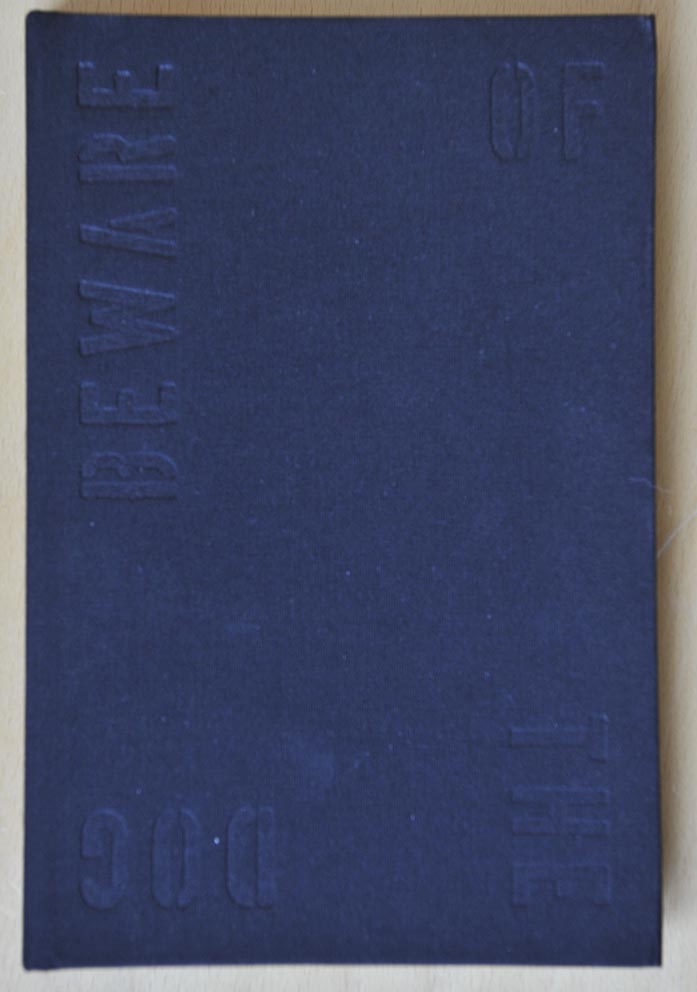
At first glance, Alex Llovet’s book surprises us. His title is barely readable, in black-on-black and written in a rotating manner, intriguing and prevalling from the outset a certain caution on what we will find, meet, cross in the book.
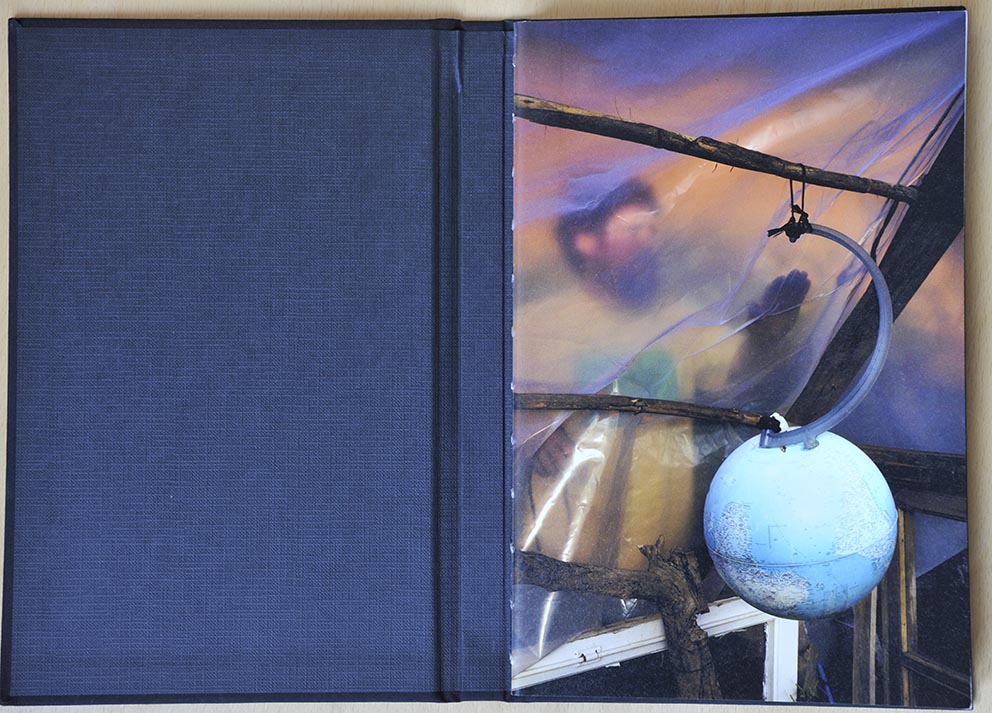
The book opens with a full-page image, as will be found throughout the book. A man, behind a plastic tarpaulin, seems to observe, from afar, behind a curtain, a world, or more precisely a broken-down world map, which, according to our ethno-centric representations, has its head down ! As if to tell us that we have to be ready to change all our preconceptions and let the world surprise us without any fear of what will be next. The title will not be repeated as often expected and, once the first page is turned, we discover a double blank page with two inscriptions, head to tail, in English and Spanish « no one » and « nadie ». Then begins a long journey made of sequences.
The first sequence of images is upside down and you have to turn the book to look at them, although there is some curiosity to look them upside down, as if to find a hidden meaning or to leave our unconscious speaking (and thus some signs appear). It’s all the more strange that, now, in order to advance in the book, we have to turn the pages as if to go backwards… until we discover a new double page with, again, inverted texts, which seem to progress « no one leaves ». A new sequence appears, asking again to resume the classic reading of the book. The last assertion will deliver us finally, not an answer, but rather a key of reading « no one leaves childhood unsattled » and in Spanish « nadie sale de la infancia ileso ». The progression is done by trial and error, between fear and joy, amazement and hope… And thus we walk beside the photographer.
The photos plunge us into the dream world of childhood. We meet children who grown up in a rural world and who cross this universe of fear, fascination and excitement. Beware of the dog tells us about fears, those we feel when we are children, those we feel when we are adults, those we feel when we are parents, in short, those that we feel through all ages of life, but have the consistency of reality making us alive. Alex’s book brings no more answers than he asks questions, he simply and gently poses moments that he gives us to contemplate. The book is elliptical, both in its sequences and in its entirety, once finished, just return it to resume the course of the story, for a moment stopped.
All the strength of this work finds here its perfect form. The images of everyday life, of the author’s daughters, to whom the book is finally dedicated and which we have been able to glimpse, refer to other images that have remained in our memory. The images, individually, are beautifully crafted, but, put end to end, side by side, forward, backward, it allows us to enter the intimacy of Alex Llovet. Not in a voyeuristic intimacy that would not interest us, but rather closer to the feelings, and then “Beware of the dog” is not so scary, we are warned and then we become attentive…
After the book « Faraway so close », « Beware of the dog » could be considered as the chapter two of « being a father » author’s own questionning.
Hardcover book published in an edition of 225 copies by Ediciones Posibles. 16,5 x 25 cm. 116 pages and 66 color photographs.
More info : https://www.edicionesposibles.com/product-page/beware-of-the-dog
And : https://www.alexllovet.com/Beware-Of-The-Dog
Subterranean river, by Łukasz Rusznica
Posted: January 5, 2019 Filed under: Photobooks, Photography | Tags: Japan, Subterranean river, Łukasz Rusznica Leave a commentLet’s take advantage of the beginning of the year to come back to a very beautiful book published last year, which, if it had not already been mentioned by others, would surely have appeared on my end-of-year list.
Making a photobook has become a pretty easy thing nowadays. As anyone in this little world, I can only admit that I am submerged every day under new announcements, new requests for crowdfunding campaigns, pre-purchase, and I do not complain, however, it becomes more and more difficult to detect works that stand out and surprise us. Making a book nowadays is no longer simply adding page after page of good quality images, but it’s much more about sharing an experience, told through a series of photographs, sketching a narrative in which the reader will be snapped up and whose he will only come out changed.
Well, Subterranean river is this kind of book, a one in which I enter with caution, a one which I sees to understand without going straight to the explanations of the author. Whether it’s a photobook, a novel or an essay, I never read the preface before entering the book, I do not want to know what I have to wait for and I prefer to stray on side roads to to fully live my own journey. So obviously, the book of Łukasz surprised me completely as much as it confused me. As a symbol, the first image shows us a nature in disorder, as a way of telling us that what is going to follow is no longer commonplace, so it only remains for us to let be taken in charge. The color images are very strong, we look for a meaning, we detect traces. Other images printed on a very fine paper come punctuate the narration, like telling us another song.
And suddenly, these two songs come into resonance as we discover a new series of photographs printed on red pages, characters, as ghosts appear in baroque compositions. Within this complicated nature, we finally crossed paths and established a communication. The book seems to be a spiritual research in the meaning of what Kandinsky said in his book « On the spiritual in art » about the different relationships between movement, form and color, in the artistic practice.
In a text, at the end of the book, Olga Drenda reveals part of the mystery and explains the quest Łukasz has made across Japan. We are here dealing with a spiritual journey, no anecdotes about the Japanese society, no sort of Orientalism as we have known for centuries. This trip could have taken place in other places, but if Łukasz chose Japan, it is, as he explains, because « When travelling to Japan, I knew one thing only — I wanted to take pictures based on Japanese mythology; I wanted to photograph the Yokai — the monsters of legend. Photography came as the result of working in new surroundings; it was the end process of meeting people and building relationships — this is surely why so many of the pictures (and the intimate ones in particular) are of my friends or the people who trusted me — of humane people. The non-human world is more than a background or visual filler; it is of equal importance. I understood that what interested me most here was nature. Man is a part of it… ».
It only remained for him to let be guided … and for us to do the same …
Harcover book published by Fundacja Sztuk Wizualnych / Palm* Studio in 2018. 23.5 x 31 cm, 120 pages. Print run : 500 copies
More info : https://palmstudios.co.uk/product/subterranean-river/
For your consideration, in my humble opinion – some books from 2018 !
Posted: December 29, 2018 Filed under: Photobooks, Photography | Tags: 2018, America revised, Christopher de Bethune, Fables of faubus, Fifty High Seasons, Gerry Johansson, John Myers, La Zone, Le fleuve Somme, Lena C. Emery, Looking at the overlooked, Orbit, Paul Reas, photobooks, Race with the devis, Rein Jelle Terpstra, RenatoD'Agostin, RFK funeral train, rites of mirrow hidden gravity, Sergej Vutuc, Shane Lynam, Stone kingdom, The people's view, Thibaut Cuisset, Touch, Yan Morvan, Yuka and the forets Leave a commentFirst of all, let me be clear, this is not a best of list of 2018 ! If you want to know the best books published this year, you can refer to the very well done compilation by Viory Schellekens caled the meta list. Here is the link : https://www.facebook.com/Viory.Schellekens/photos/a.1894706323931695/1907864862615841/?type=3&theater
I have to confess that all those lists are no surprise, Raymond Meeks, Mark Steinmetz, Matthew Genitempo, Carmen Winant, Laia Abril and you can go on… of course they are the best books of 2018. Just consider the meta list and you’ll get the best books published this year (236 list makers…), nothing else to say. So I was wondering, what is the point to post another list. For the last few years, I did what I called a “los olvidados” list (yep that’s a reference to Bunuel), but this year, it is not a forgotten list, but rather a question : why those books have not been mentionned so far. I only choose books which not appear in the meta list (two mention to appear), so if Viory includes my list, maybe some will appear and gain a rank…
Let’s start with no order neither priority and I wish you all a happy new year full of great discoveries in 2019 :
Race with the devil by Yan Morvan, published by Serious publishing
Yan Morvan spent years with motobike gangs, even putting his life in danger, this work is unbelievable for me in consideration of immersion to get good photos. Ans he remains not that known worldwide. I also though about another great book from Yan published this year : Bobby Sands with André Frère.
Le fleuve Somme by Thibaut Cuisset published by Diaphane Editions
Still don’t understand why this wonderful photographer remains unknown. The slow melancholy of his landscapes deserves a wider eccho, maybe if Steidl finally publishes his “French Landscapes” next year !
Looking at the overlooked by John Myers, published by RRB Photobooks
Probabaly one of my actual favorite photographer. For those who know my work you may understand why. And finally a great book (with his previous one “Portraits”) which gives justice to his work. Well technically, this one is supposed to be published in 1019, but I already received it, so…
America revised by Gerry Johansson, published by Only Photography
Gerry is one of my absolute favorite photographer and his book American winter has already been mentionned profusely, but… If American winter is another great book, it is just another one in his series of cities books. This one brings in light his very marginal color work which is gorgeous, but also a larger size printed view of his photographs in the size of his original prints, and everything perfectly done as Roland Angst knows to do.
Fifty High Seasons by Shane Lynam, selfpublished
A wonderful testimony of what has become one of the most incredible touristic and land planning experience of the XXth century. Planification to create from nothing one of the biggest French touristic area. A gret discovery for me, including what was called the Mission Racine planned by the DATAR.
Fables of Faubus by Paul Reas, published by Ghost books
We all know Martin Parr’s work, but Paul Reas has been long ago working on the same topics, and finally a book which gave him justice : a dive through the English society with reality, humor, sadness and colorful…
Stone Kingdom by Christopher de Bethune, published by Le Mulet
I am a total fan of Christopher’s work. There is so much poetry in the way he looks at things. You just need to hold one of his book in your hands to be converted… Unfortunately only 60 copies.
Touch, Rites of Mirrow Hidden Gravity by Sergej Vutuc, selfpublished
Time after time Sergej still surprises me with new experiments and renewal. He turns reality into abstractions and kind of mental images of the world that surrounds us. Handmade books after books they are more and more fantastic ! 100 copies only.
Robert F. Kennedy Funeral Train – The People’s View by Rein Jelle Terpstra, published bu Fw:Books
I have always loved Paul Fusco’s idea of taking pictures from the funeral train of Bobby Kennedy showing America in 1968. Rein jelle Terpstra investigates the way that was followed by the train to find pictures made by people standing by the passing of the train. Some brilliant reverse shots which complete the original story and tell a lot about the moment.
Orbit by Renato D’Agostin, published by IKKI
IKKI edtions initiated a few years ago a collaboration between photographers and musicians. Every book is a journey of the photographer to accompany a specifical music, this one comes with a composition by Scott Worthington. You can turn the page listening to the music, or vice versa. So far two sets of three books and records have been published.
Yuka and the forest by Lena C. Emery, published by APE
A slow meditation about a girl and a forest, beautifully printed and a touching story if you make yourself available to it.
La Zone, published by gallery Lumière des Roses
A catalog of an exhibition held in Montreuil at gallery “Lumières des roses” with numerous photos of the former suburbs of Paris. A piece of history about contemporary urbanisation of cities.
Look I’m wearing all the colours, by Rikard Österlund
Posted: November 4, 2018 Filed under: Photobooks, Photography | Tags: England, Look I'm wearing all the colours, Rikard Österlund, selfpublished, Sweden, Zara Leave a commentRikard was born in Sweden and settled in England years ago. In 2005, he met Zara and they’ve been living together until now. This is the story that Rikard Österlund tells us in this very touching book.
But wait, another point of importance in this story, is that Zara suffers from fibromyalgia, hypermobility syndrome, obsessive compulsive disorder and anxiety. This disease is difficult to diagnose, but most importantly, the only treatment is to manage the effects of the disease. When affected, you really have to live with it and Rikard and Zara share this together since the beginning of their relationship. The fact that this disease was known from the beginning of their relationship makes the story more touching and, as Rikard says, they have learnt to live this like a third person in our relationship.
One of the great qualities of this book is that it opens the doors to the intimacy of the couple. But here, the term intimacy has to be read in term of love, not in terme of voyeurism, a bit like if Rikard was afraid to see disappear all these shared moments. The context is set in the preamble of the book, the title is also explained, since it is a sentence that Zara sometimes pronounces when entering the office of Rikard : Look I’m wearing all the colours. The use of colour in the book is not neutral, the story of the couple is an explosion of colours, whether shared moments or as Zara is dressed. But the book is also punctuated with black and white photographs, and it tells a kind of parallel history, like the presence of the unconscious, as for magnified moments, imprecise memories that in the remnant of moments of pain testify a need for the spirit to escape, to wander, to regain strength.
As a result, we quickly feel a great empathy for Zara and Rikard. This form of intimacy does not hide the reality of everyday life, despite the explosion of colors, difficult moments emerge between pages of joy. The suffering of one becomes that of the other and, over this reading, it is also our own.
The book is a long poem dedicated to Zara and its layout uses lots of metaphors, it opens on a blue sky on which clouds are appearing, themselves tainted with warm colors, then, we discover a swan, alone, as in the looking for his partner (we know that swans can stay in couples all their lives), and then, Zara’s face appears behind a window fogged, imprecise and immaterial before seeming to wake up on the next page.
Are we diving into a dream or are we coming out of it? Much more than a book on Zara, this book is a book about Rikard’s love for Zara, whom he compares to a Madonna on a double page with a sweet and tender portrait on the left and a statue on the right. He shows us all his feelings, from doubts to joy or pain, like on this double page with on one side a hospital corridor (no way out) and on the opposite page the shadow profile of Rikard interpreted as we can assume as doubts and fears for the future.
The book ends softly with the beautiful picture of Zara, finally appeased and full of hope, who hands him a flower picked in the garden nearby, and seems to say : do not worry, everything will be fine! And so, we are also a little convinced that, yes, everything will be fine!
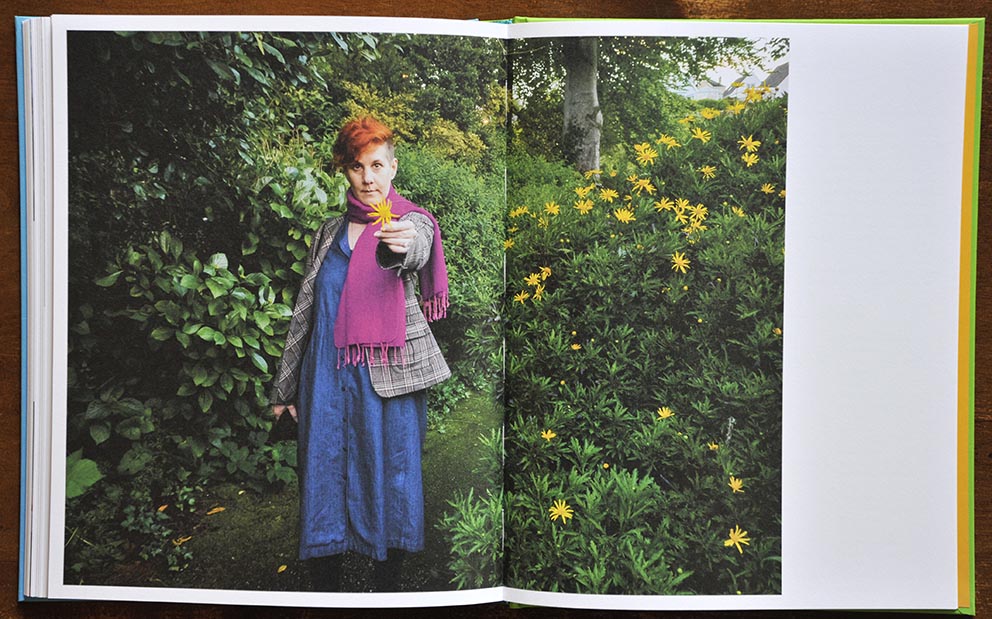
Hardcover book selfpublished in 2018. 120 pages with 90 colour and black and white photographs. Edition of 500 copies.
More info : https://www.rikard.co.uk/allthecolours
